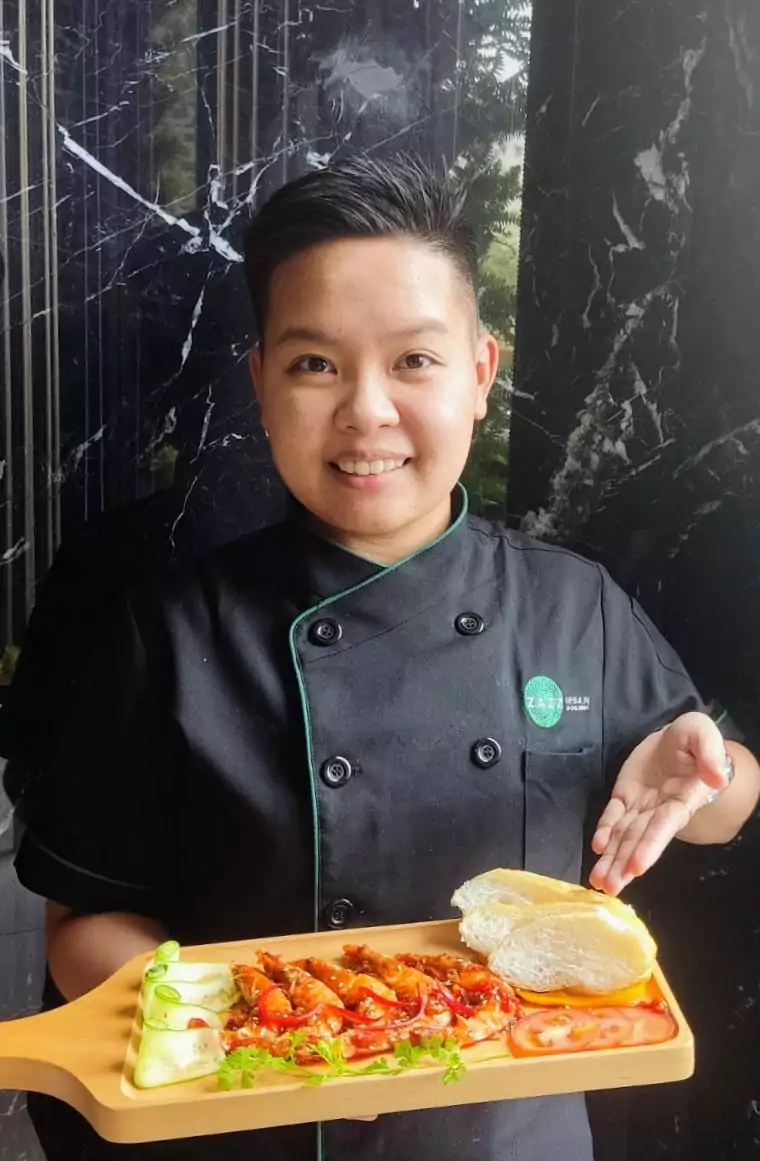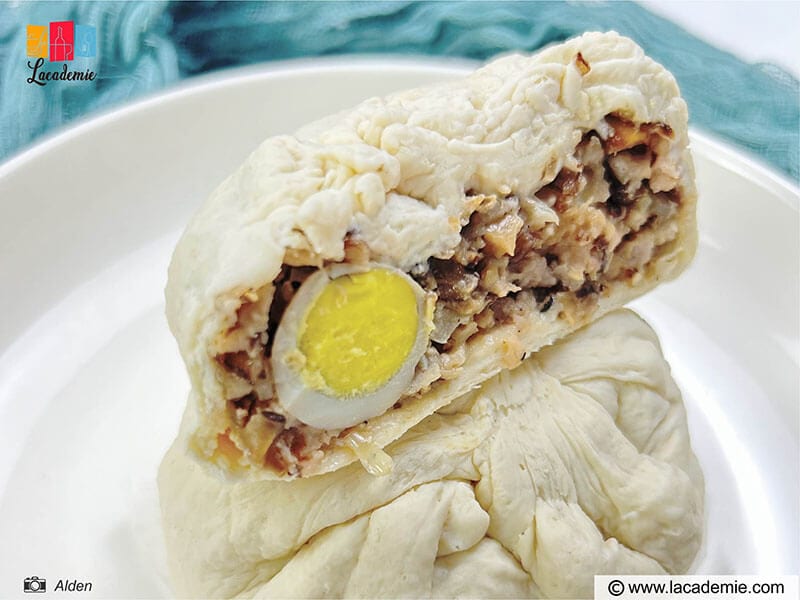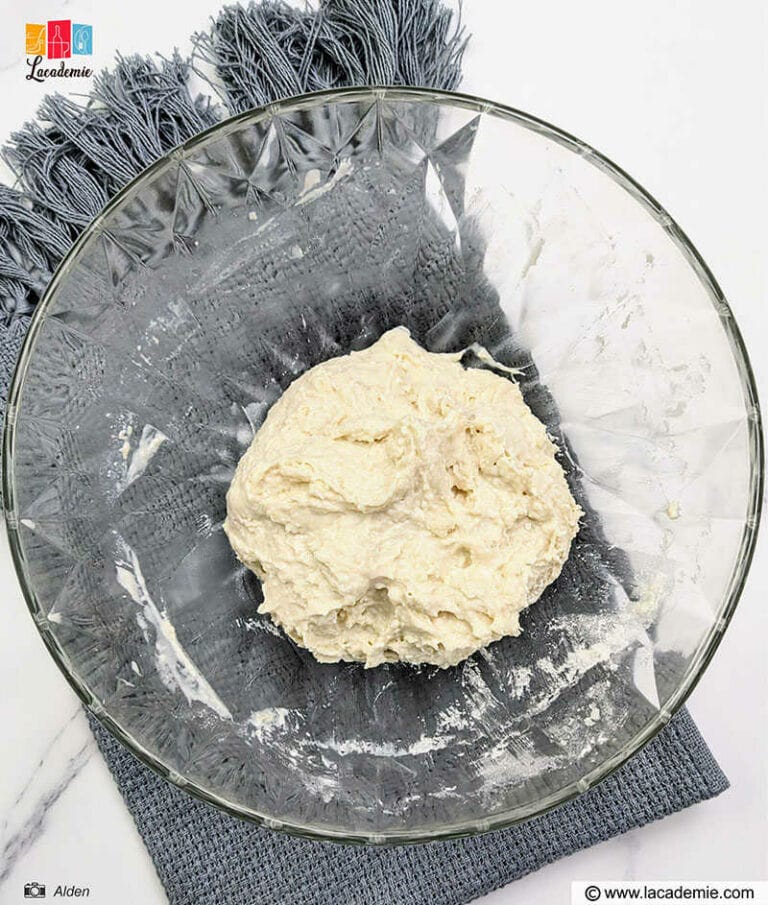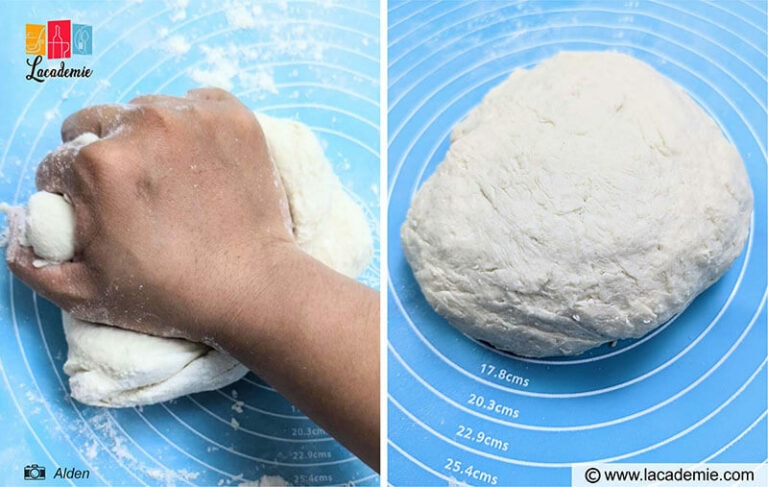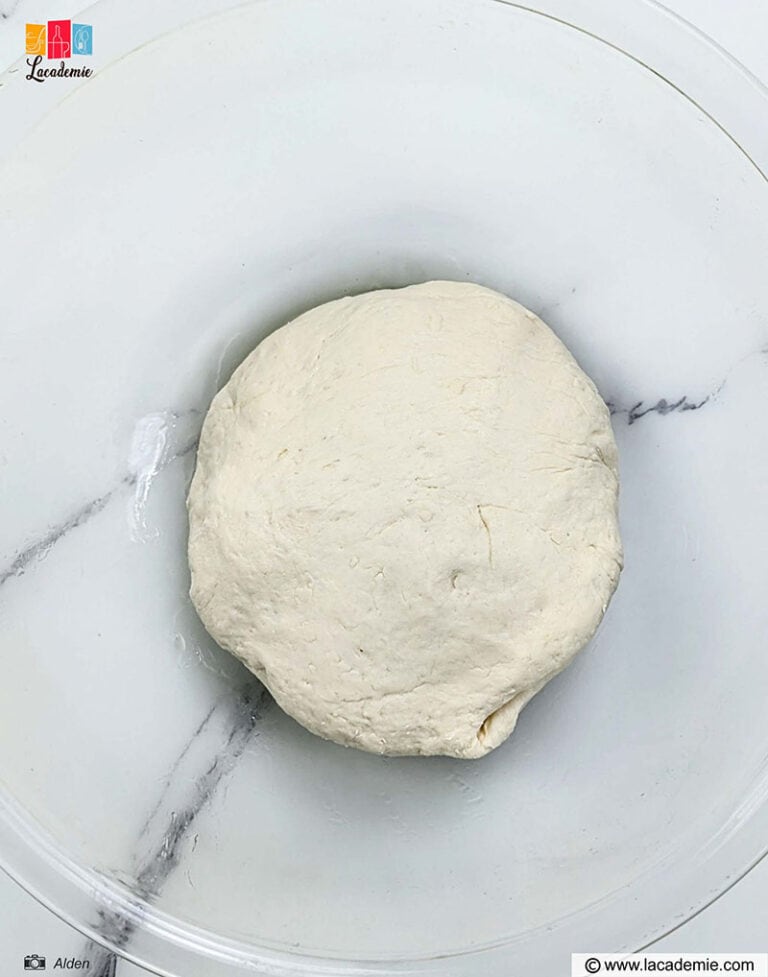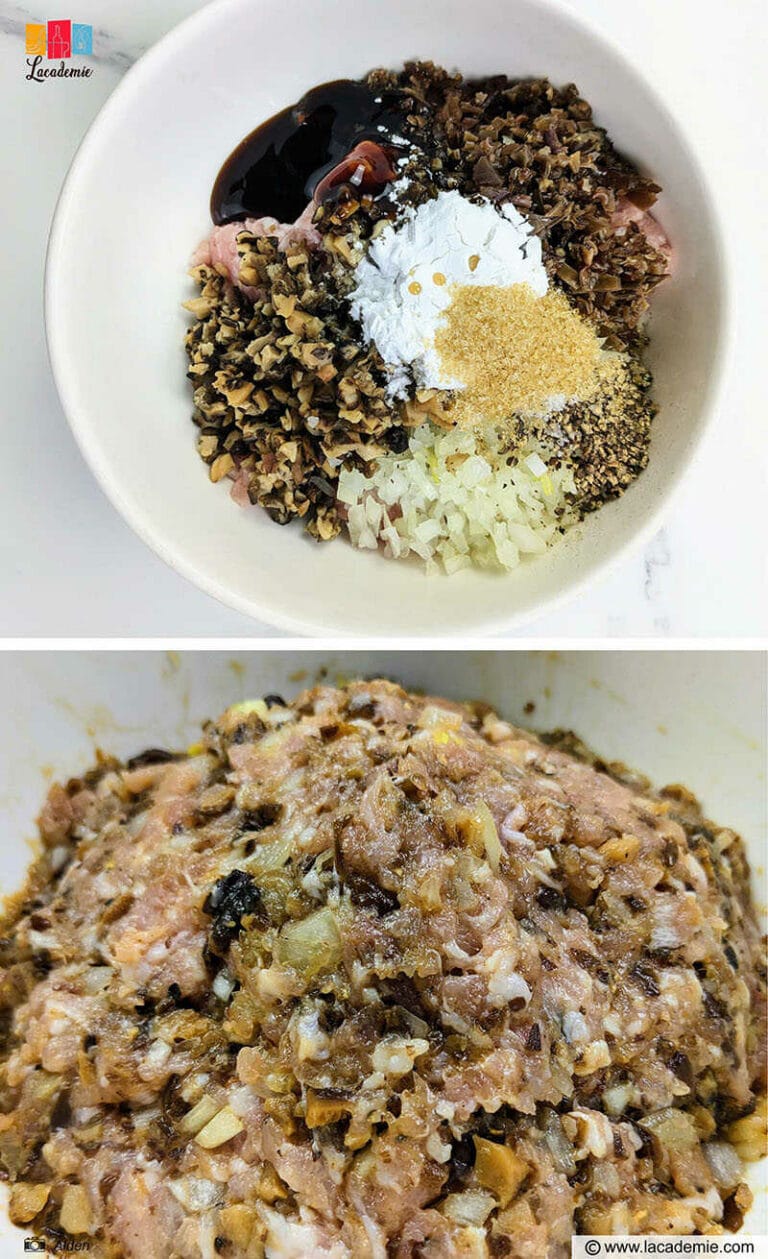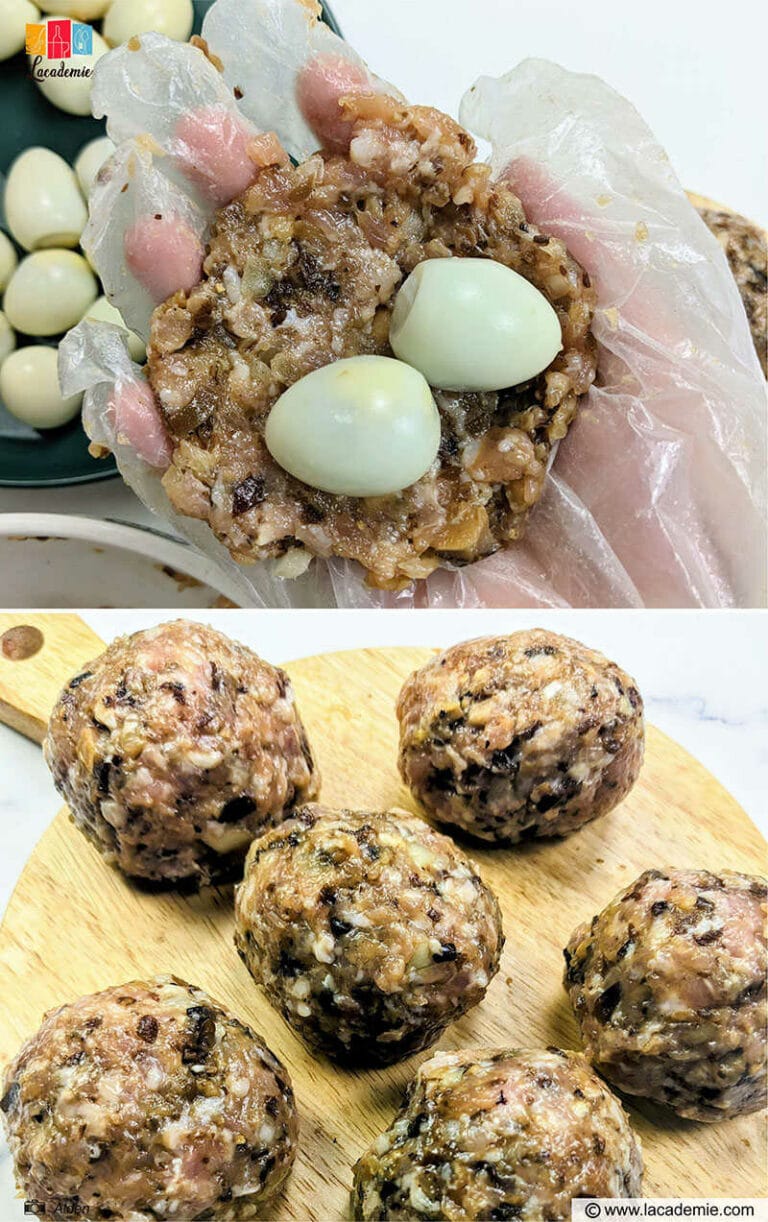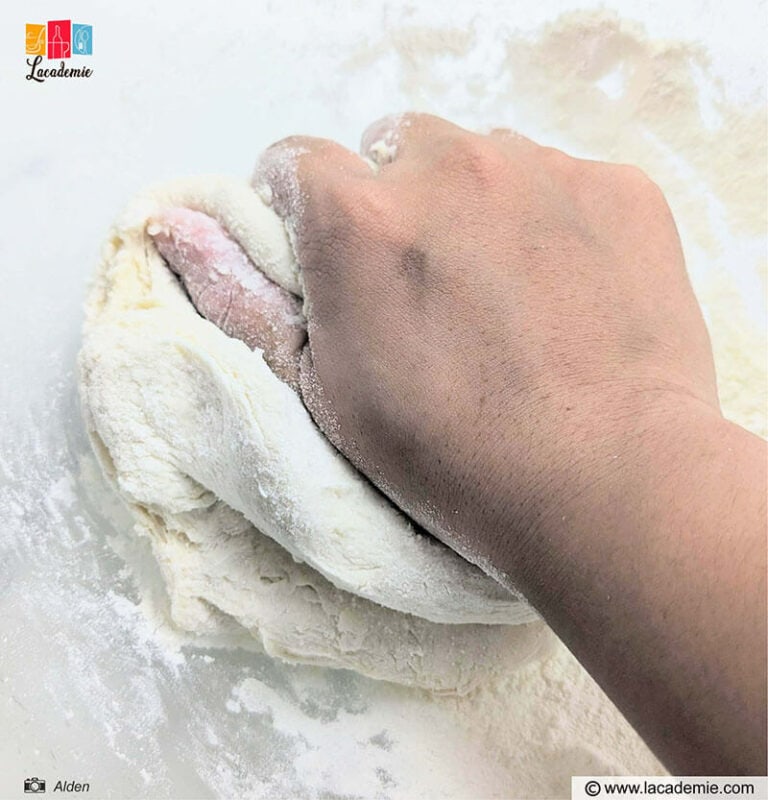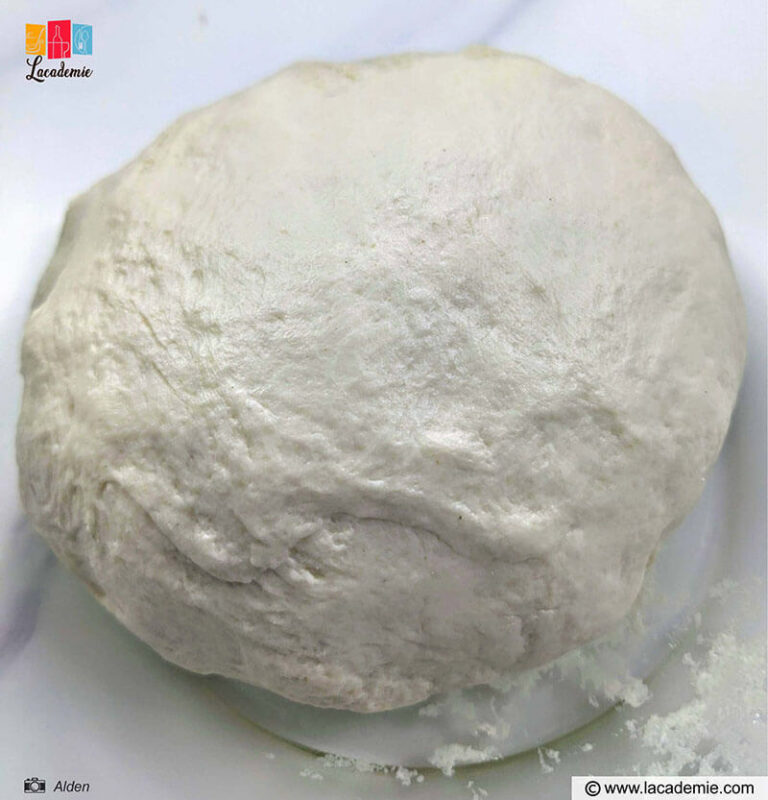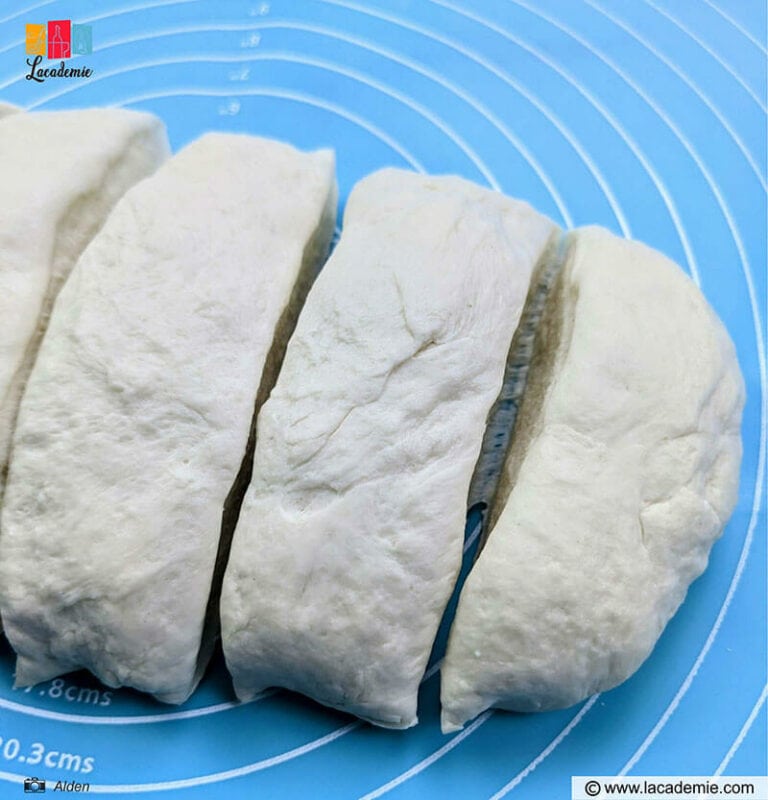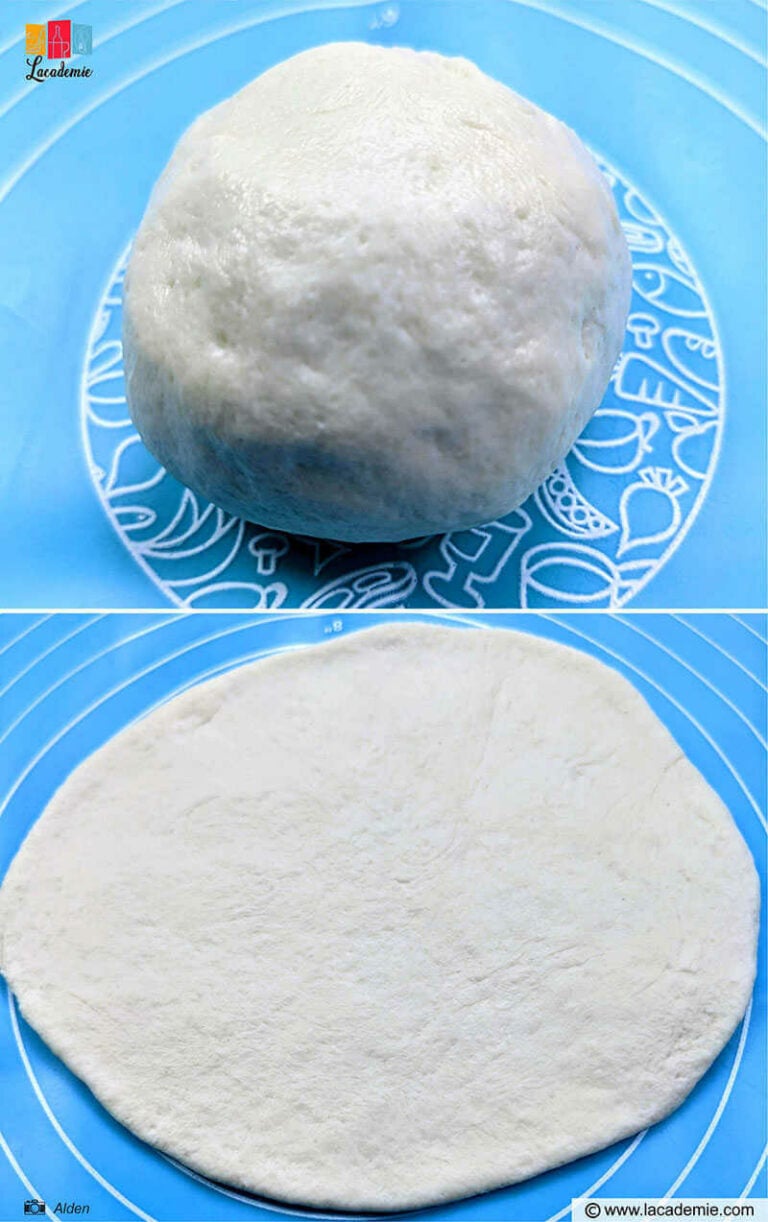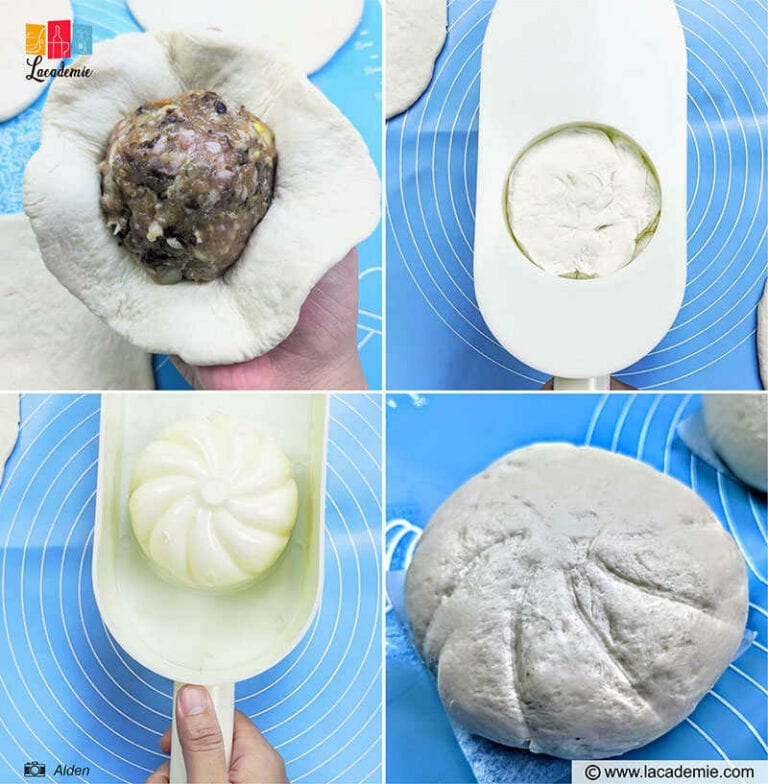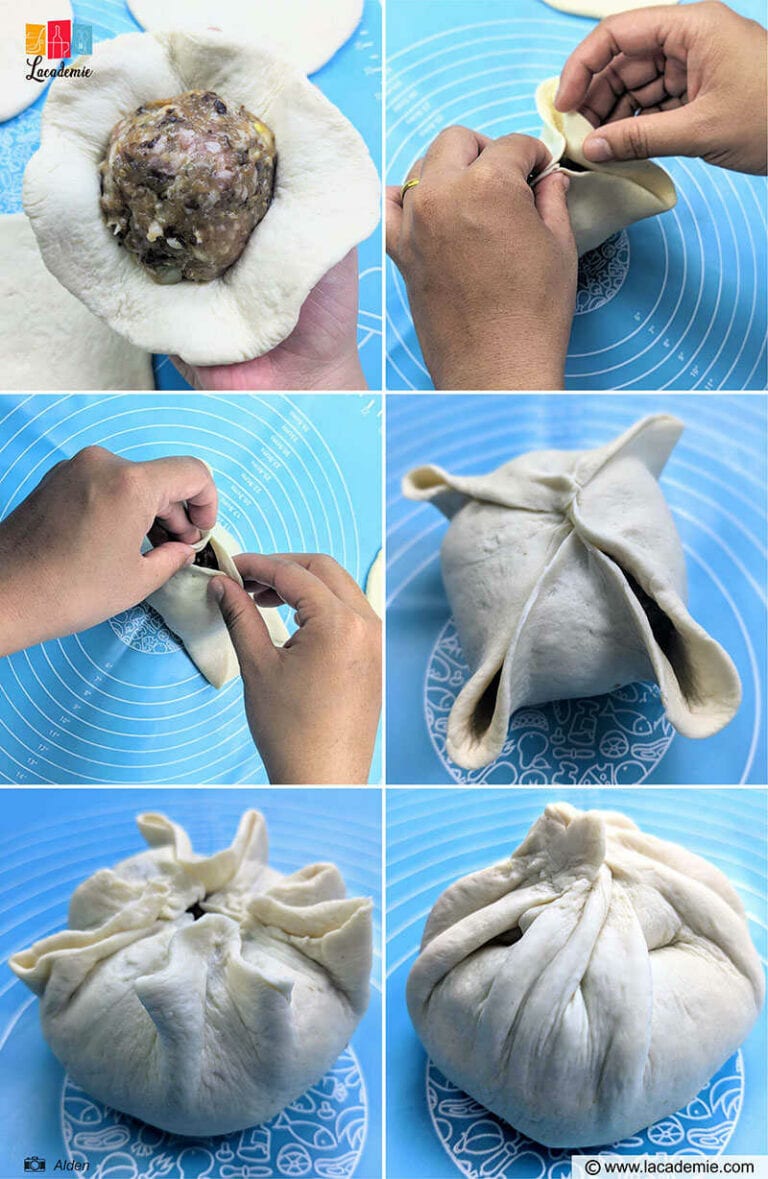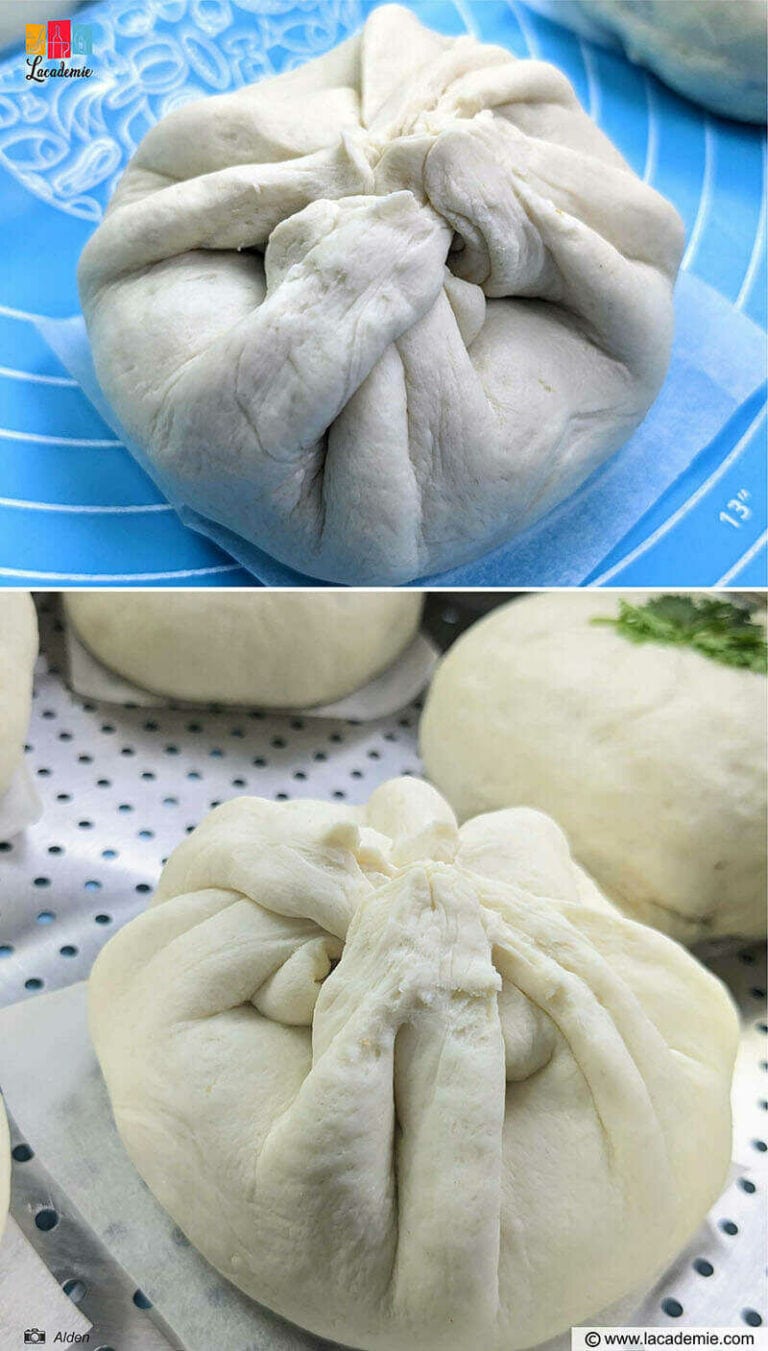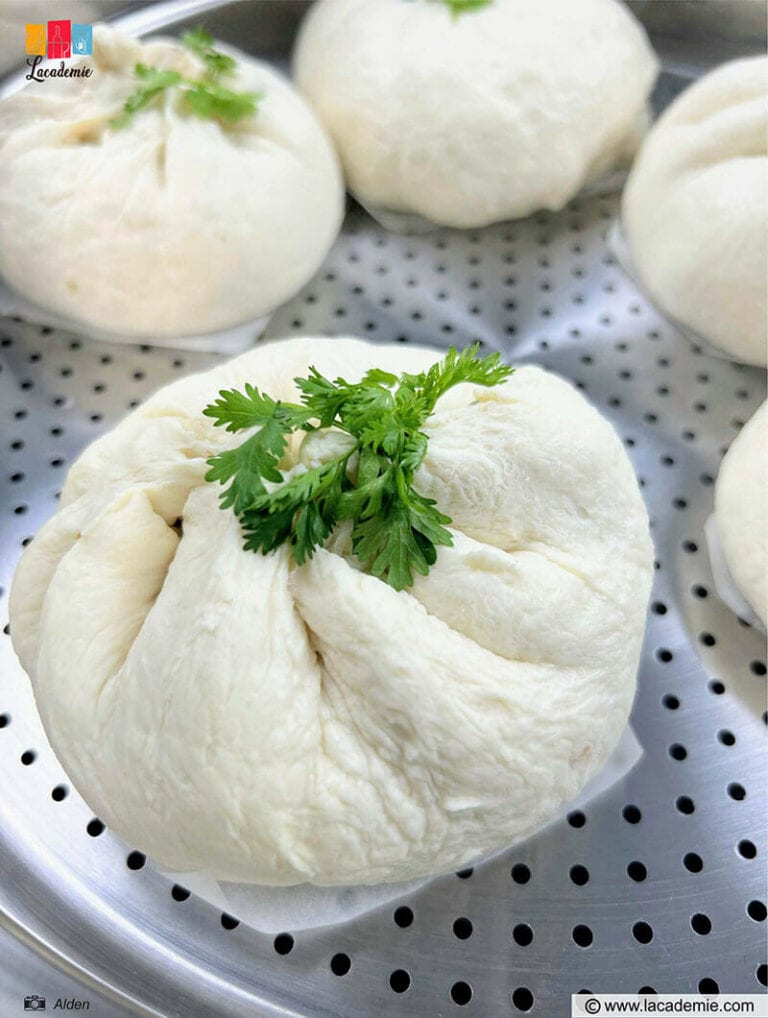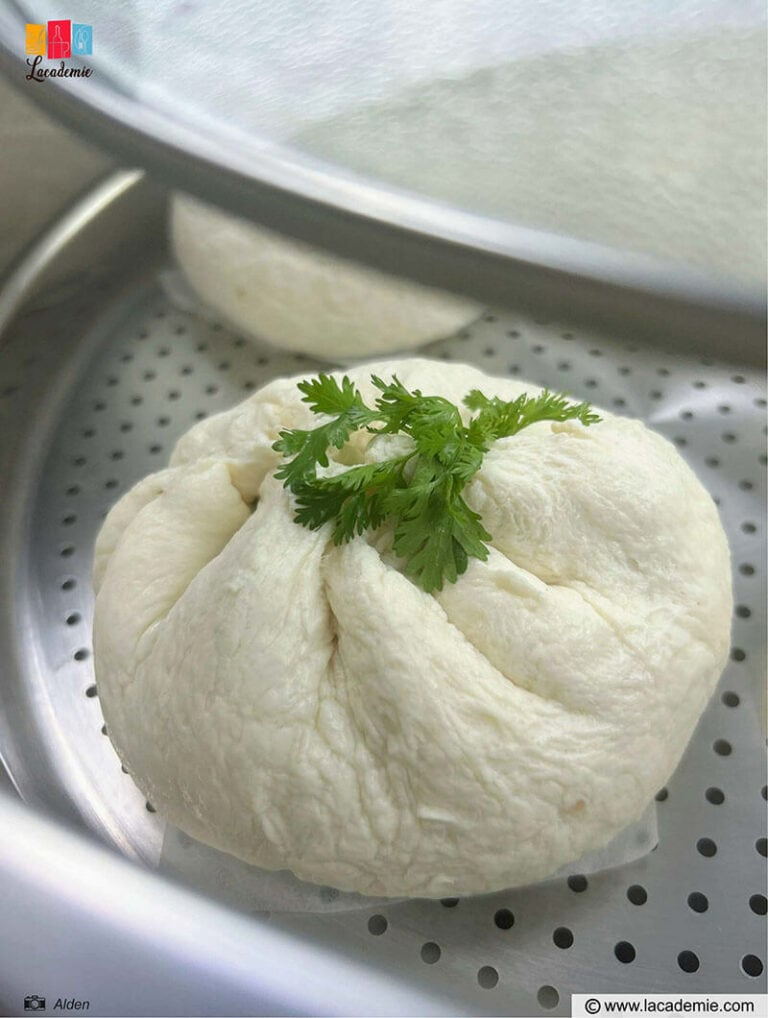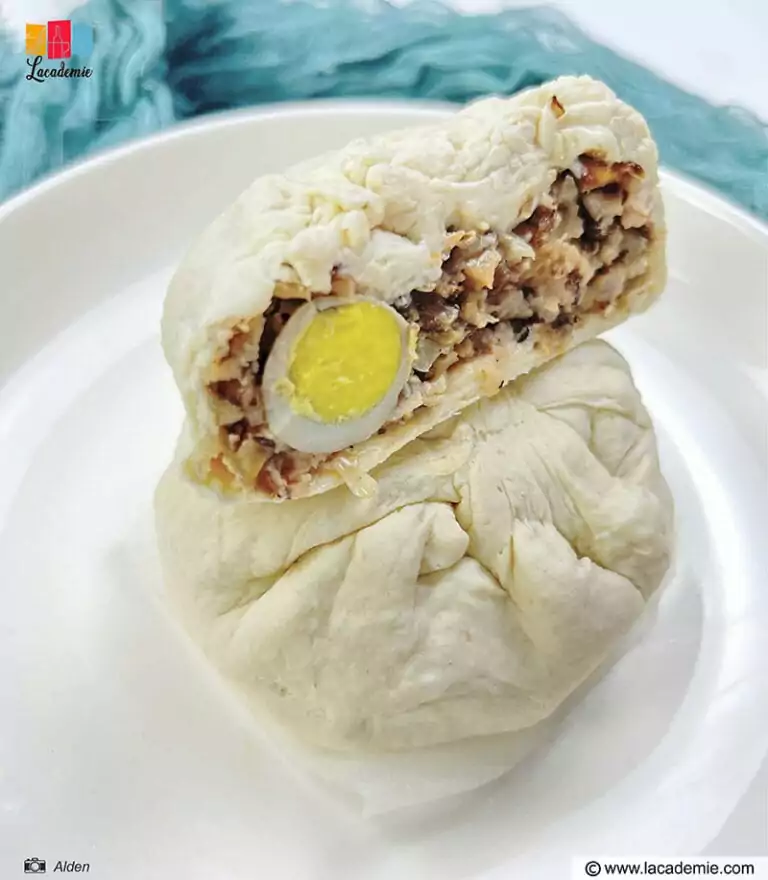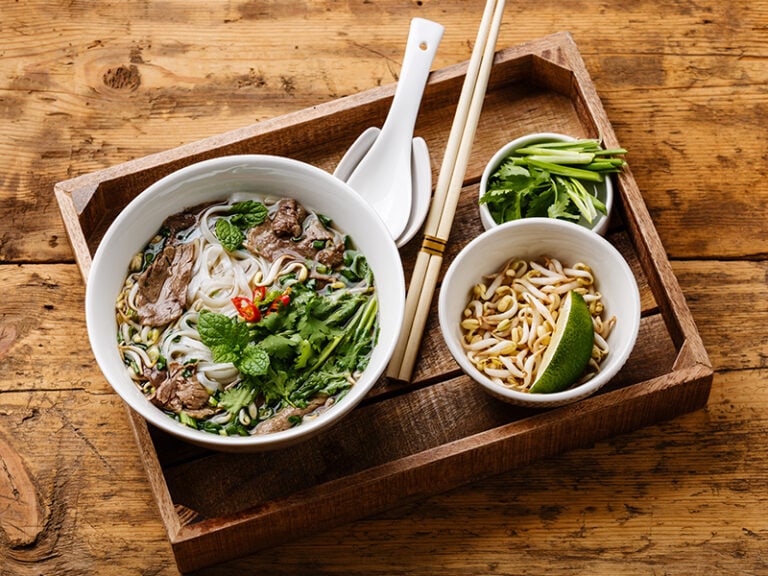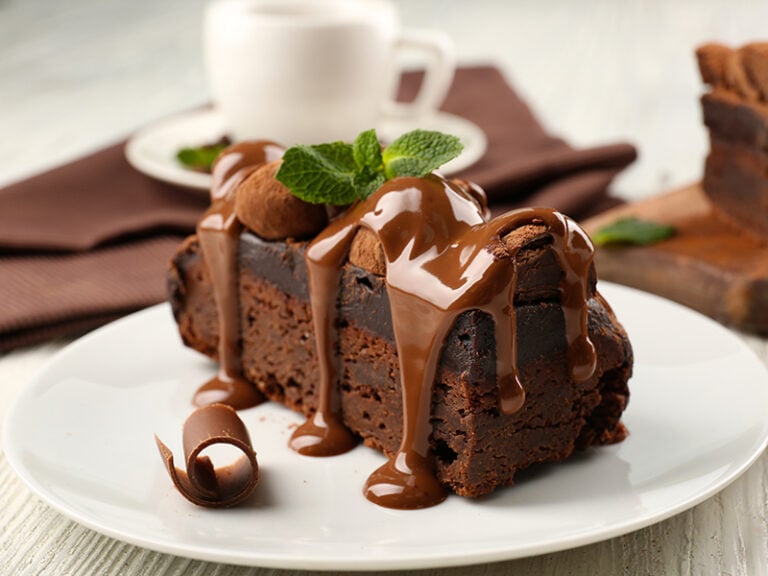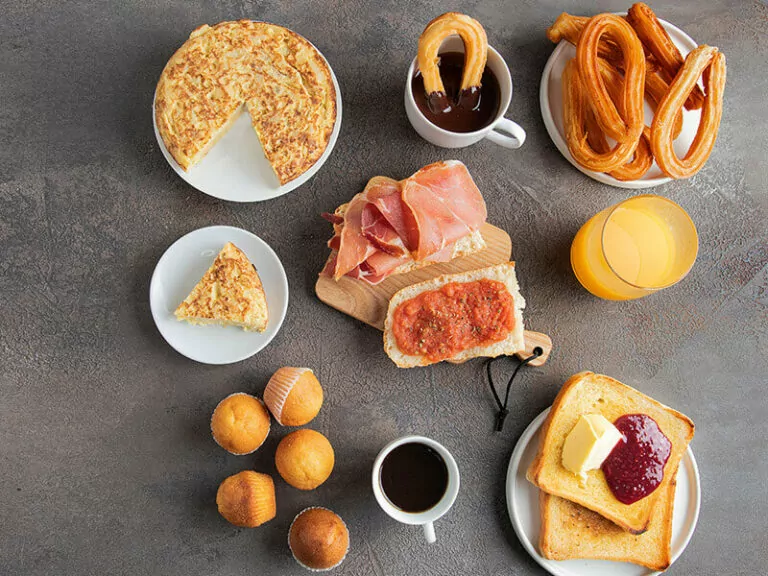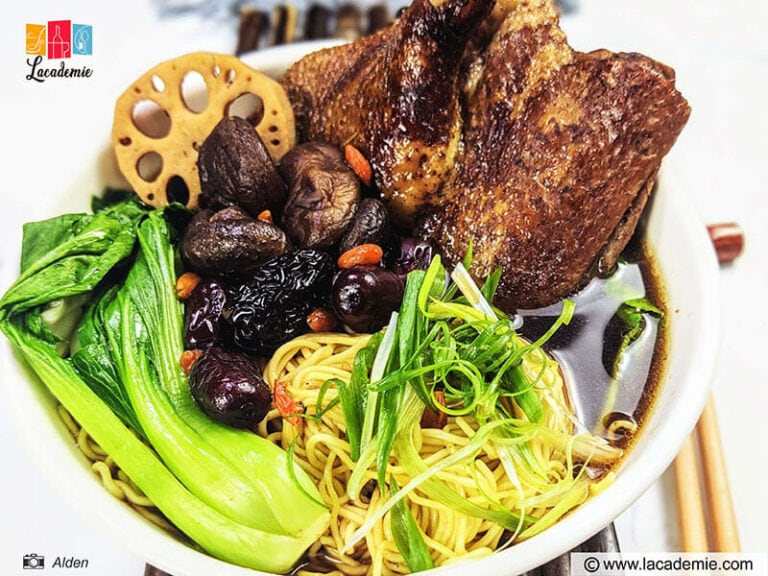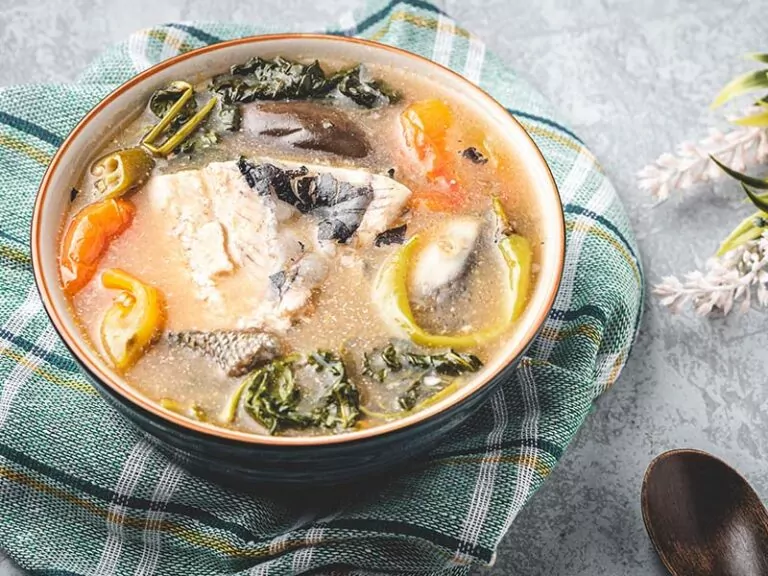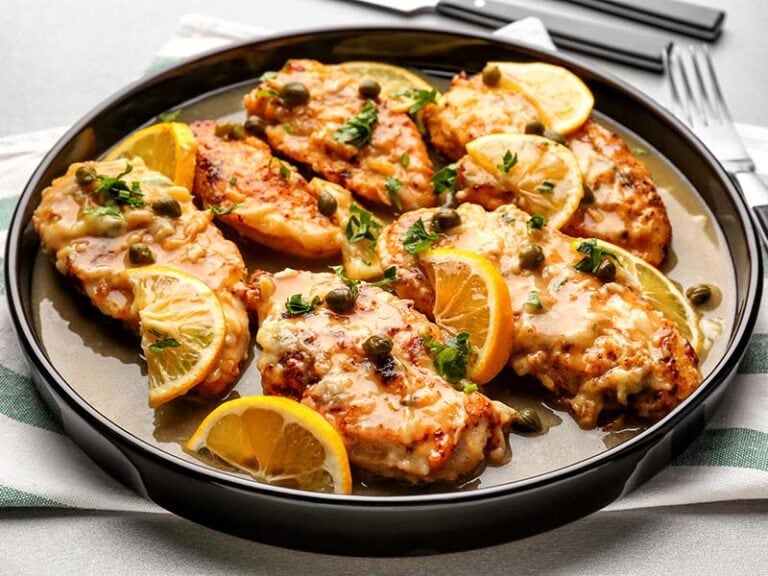Vietnamese pork buns, also known as Banh Bao, filled with tender pork and encased in soft, pillowy dough, are a true delight and showcase the essence of Vietnamese cuisine. These scrumptious buns are perfect for a satisfying breakfast or snack.
In just a few simple steps, you’ll craft mouthwatering buns that are a feast for both the eyes and the palate. Don’t miss this opportunity to dive into Vietnamese food culture and elevate your cooking skills with this irresistible Banh Bao recipe!
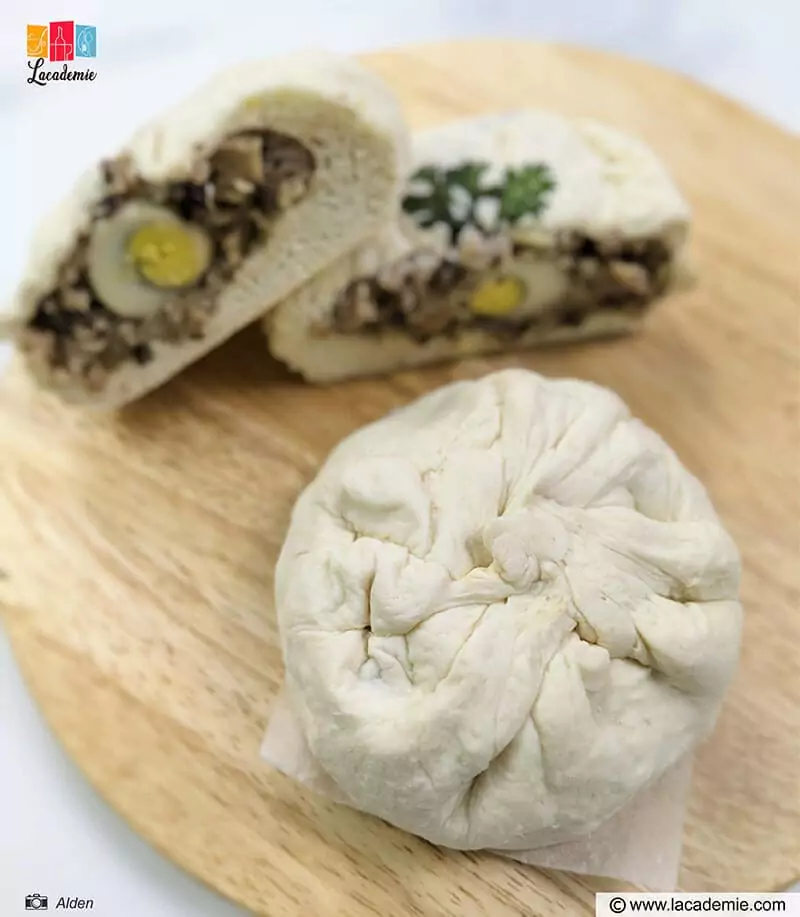
Getting To Know Vietnamese Banh Bao
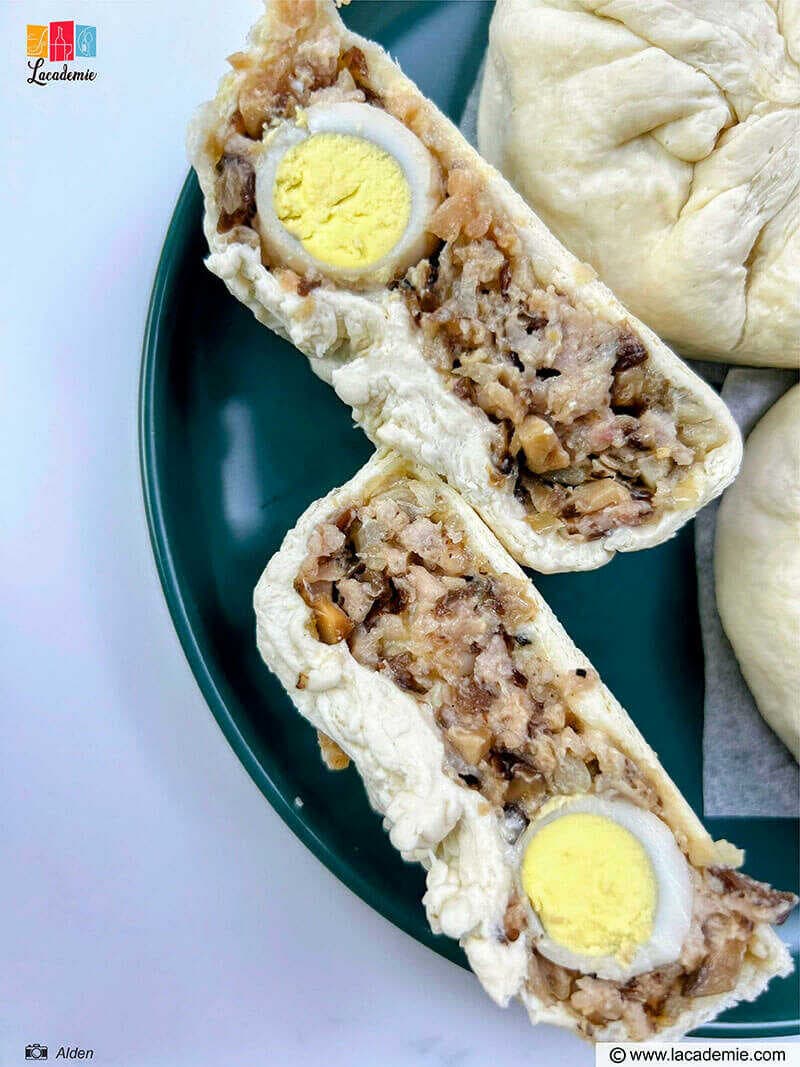
Vietnamese pork buns, or Banh Bao, are a culinary creation that has evolved from its Chinese origins. While similar in appearance to Chinese Baozi, Vietnamese Banh Bao is typically smaller and features a unique blend of ingredients.
The filling of Vietnamese Banh Bao typically consists of ground pork (including both lean and fatty parts), mushrooms, quail eggs, and sometimes salted eggs. Over time, Banh Bao has become a popular street food in Vietnam. These convenient buns serve as an ideal breakfast option for busy mornings.
The making of Banh Bao is also considered a culinary art in Vietnamese culture, requiring skill to perfectly balance the flavors and to create the delicate, fluffy texture of the bun.
Tools
- Steamer pot: A steamer pot is crucial for cooking Bánh Bao, as it provides the moist heat necessary to cook the buns evenly without direct contact with the water.
- The steamer pot, often made of bamboo, stainless steel, or aluminum, allows the buns to expand and become fluffy as they cook.
- Large mixing bowl: The large mixing bowl serves as the primary vessel for combining the dough ingredients, ensuring ample space for mixing and kneading the dough until it achieves the desired consistency.
- Spatula: A handy tool for stirring and folding the dough as it comes together. It also assists in scraping the dough from the sides of the bowl, ensuring that no ingredients go to waste.
- Baking mat: A non-stick baking mat provides a clean and smooth surface for rolling out the dough, preventing it from sticking to the work surface and making it easier to handle.
- Rolling pin: Use this tool to flatten and roll the dough out to the ideal thickness, providing uniformity in size and shape for the Banh Bao.
- Dough scraper: A dough scraper is a versatile tool that helps cut and shape the dough, as well as clean the work surface. It also assists in lifting the dough off the baking mat without tearing or distorting its shape.
- Banh Bao mold (optional): While not strictly necessary, a Banh Bao mold can be a helpful tool for shaping the buns uniformly and ensuring consistent size and appearance.
- Plastic wrap: Plastic wrap is essential for covering the dough during the resting period, preventing it from drying out and developing a crust. It also helps maintain the dough’s moisture content, ensuring a soft and tender texture in the final product.
- Parchment paper: Parchment paper serves as a barrier between the Bánh Bao and the steamer, preventing the buns from sticking to the steamer pot and making it easier to remove them once cooked.
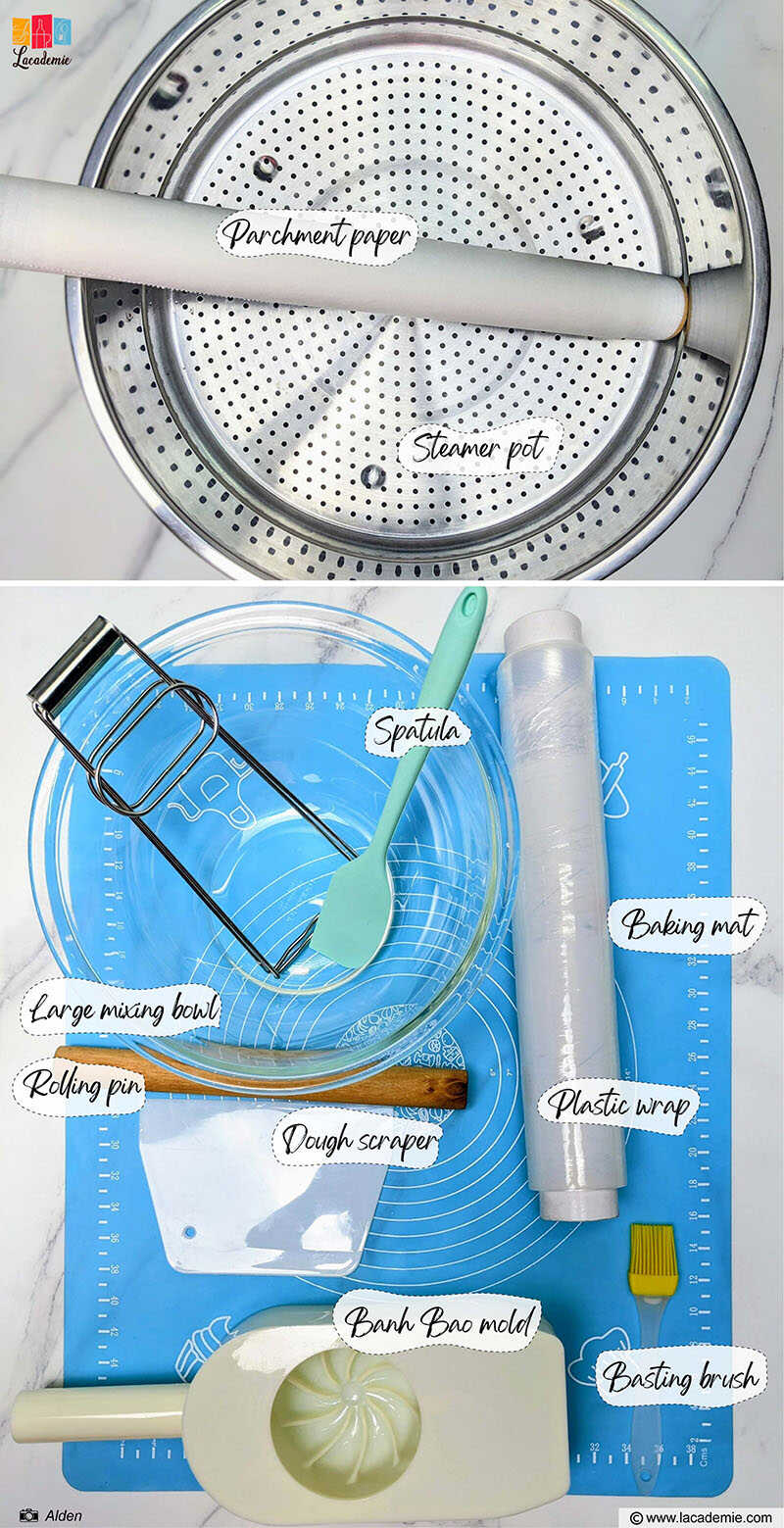
Ingredients
First Part
- Instant yeast: Acts as a leavening agent, allowing the dough to rise and become fluffy.
- All-purpose flour (10-11% protein): Provides the main structure of the dough, determining its texture and consistency.
- Sweetened fresh milk: Adds sweetness, flavor, and moisture to the dough, contributing to a tender texture. If you use unsweetened milk, you can add some sugar.
- Cooking oil: Enhances the dough’s softness and prevents it from drying out during cooking.
- Second Part
- All-purpose flour: Works in tandem with the first part to build the dough’s structure and consistency.
- Baking powder: An additional leavening agent that helps the dough rise and become light and fluffy.
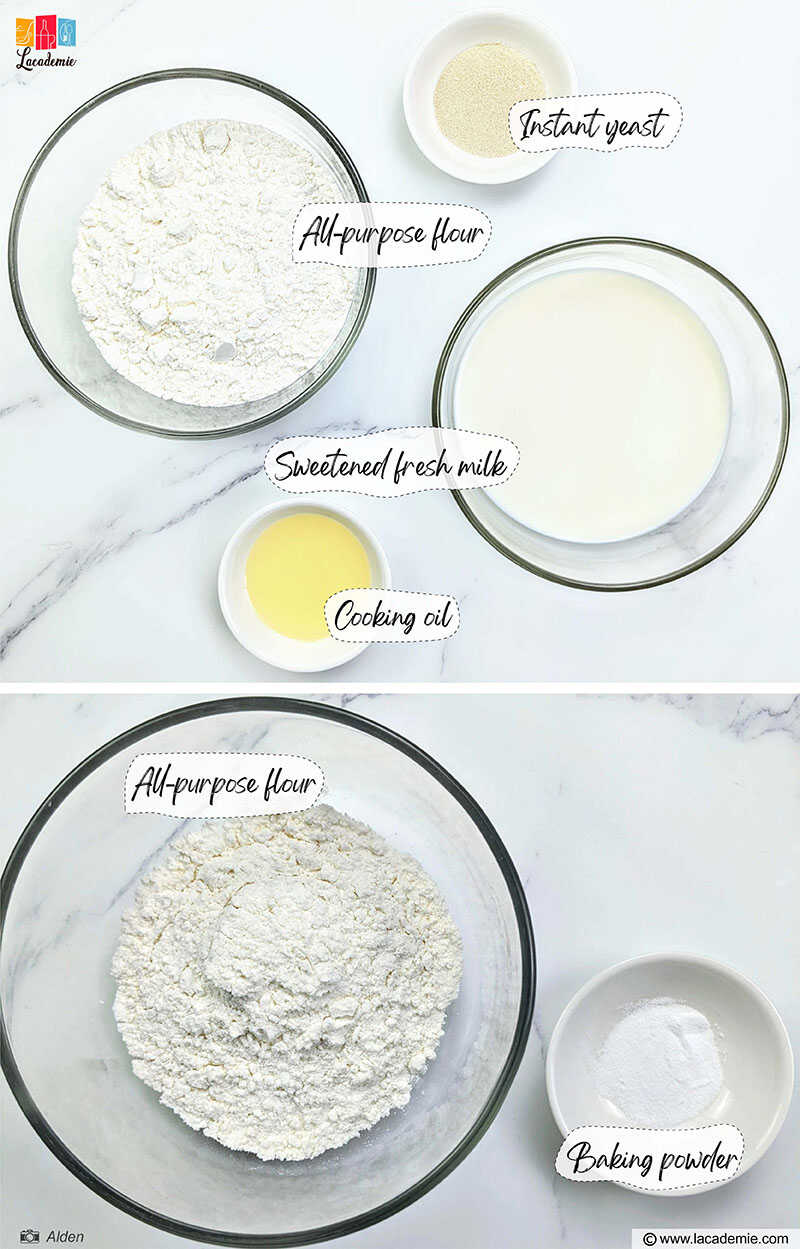
For The Filling
- Ground pork: The main protein component, providing a rich, savory flavor to the Bánh Bao filling.
- Quail eggs: Enhance the filling’s texture and taste while providing an additional source of protein.
- Onion, wood ear mushroom, and shiitake mushrooms: Add depth of flavor, texture, and a hint of earthiness to the filling.
- Sugar: Balances the savory flavors in the filling, adding a touch of sweetness.
- Salt: Enhances the overall flavor of the filling, bringing out the natural flavors of the ingredients.
- Pepper: Adds a subtle spicy kick to the filling, complementing the other flavors.
- Sesame oil: Imparts a nutty aroma and flavor, elevating the taste of the filling.
- Oyster sauce: Provides a rich umami taste, adding depth and complexity to the filling’s flavor.
- Tapioca starch: Helps thicken and bind the filling, ensuring it holds together well inside the Bánh Bao.
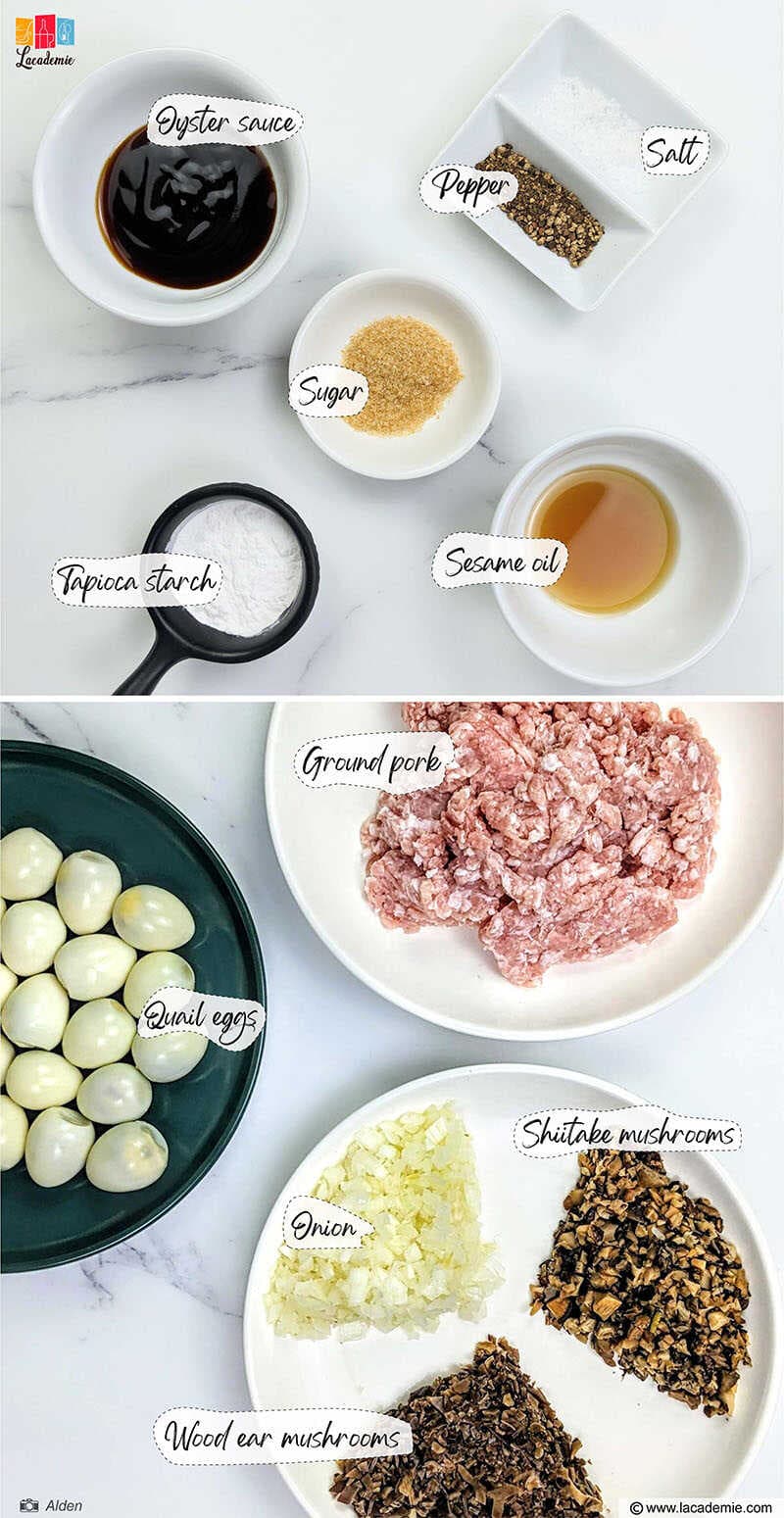
Directions
Step 1: Activate The Yeast
If using regular yeast, activate it by heating 1 tablespoon of fresh milk over low heat until slightly warm, then add the yeast and stir.
Rest the yeast for about 10 to 15 minutes until it expands. Note that the ideal temperature for activating yeast is between 90 and 104 degrees F (32 and 40 degrees C). Using instant yeast does not require this step.
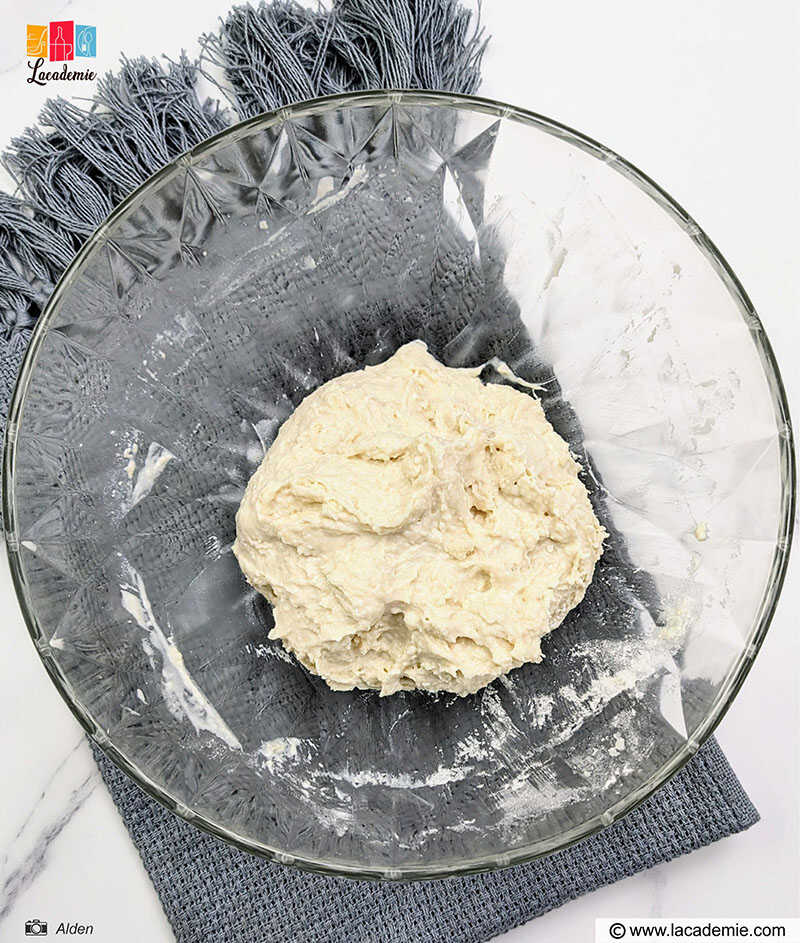
Step 2: Proof The Dough
Mix the first part of the dough ingredients in a large bowl, leaving about 0.7 ounces of flour for dusting the baking mat.
Knead on a floured baking mat for 15-20 minutes until the dough is no longer sticky. If too dry or you find it hard to knead, add a bit of oil or water. If too wet, add about 0.2 to 0.35 ounces of flour.
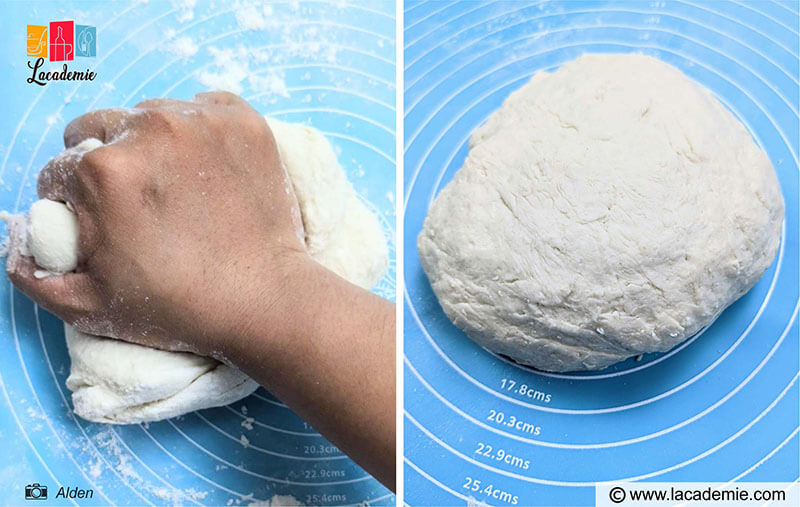
Grease a large bowl. Then, place the dough inside, and cover it with plastic wrap. Let the dough rise for about 2.5 hours or until it has expanded 2.5-3 times its original size. The best proofing temperature is between 77 and 100 degrees F (25 and 38 degrees C).
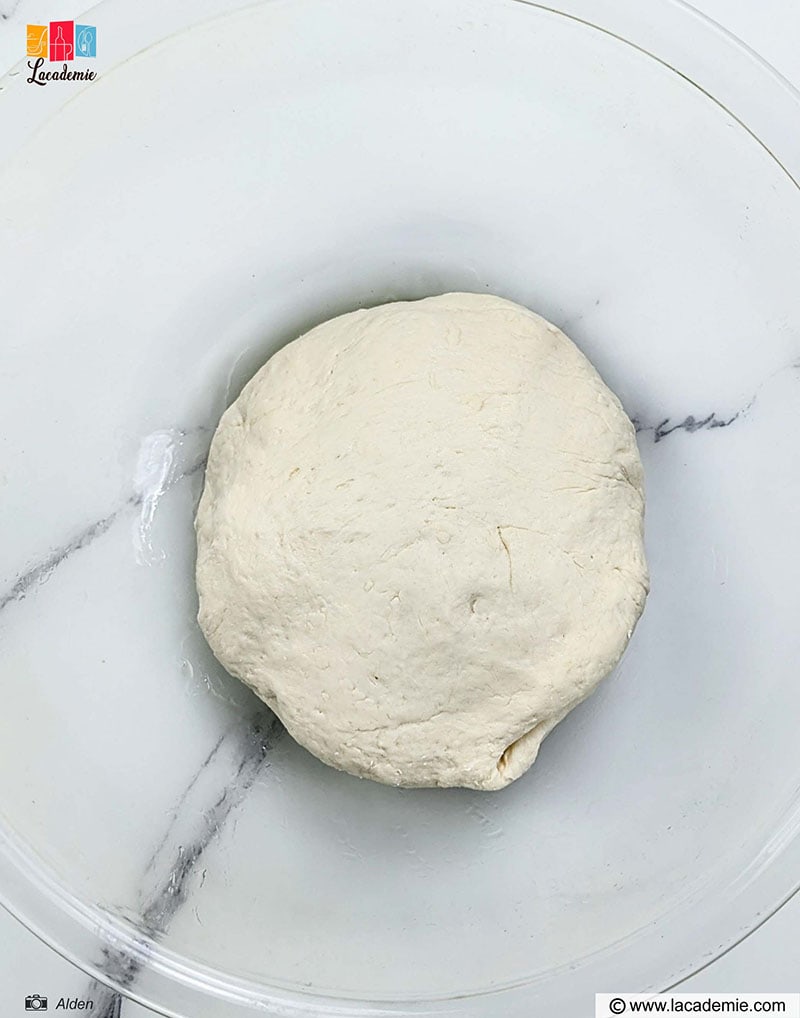
Notes:
During the summer, you can let the dough sit at room temperature. In the winter months, when it’s cold, you can use an oven by preheating it to 122-158 degrees F (50-70 degrees C) for 3-5 minutes, then turning it off and placing the bowl with the dough inside to rise.
Alternatively, you can use a microwave, placing a large bowl of boiling water inside to help maintain humidity and warmth.
Step 3: Prepare the filling
Combine all the filling ingredients in a large bowl and mix well.
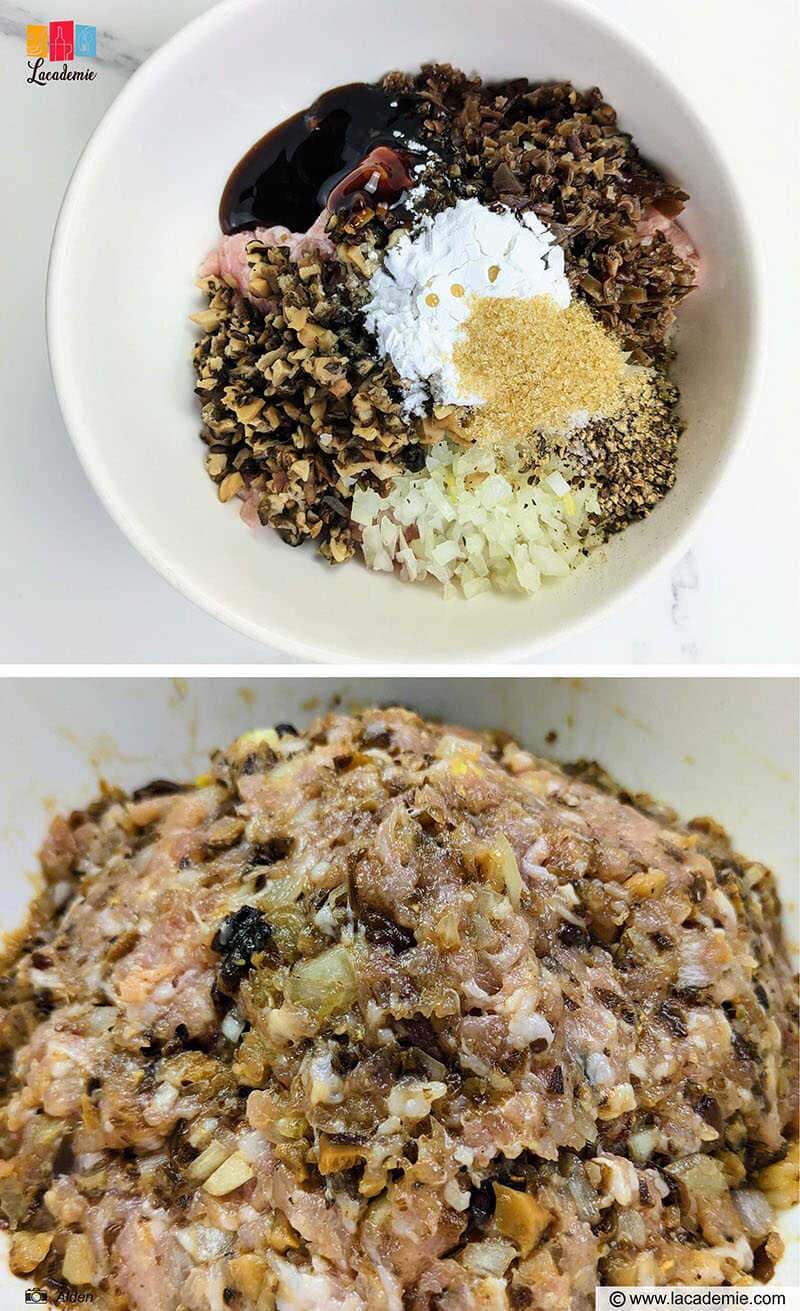
Shape the filling into round patties and place 2 or 3 quail eggs (depending on preference) in the center of each patty, carefully folding the filling around the eggs.
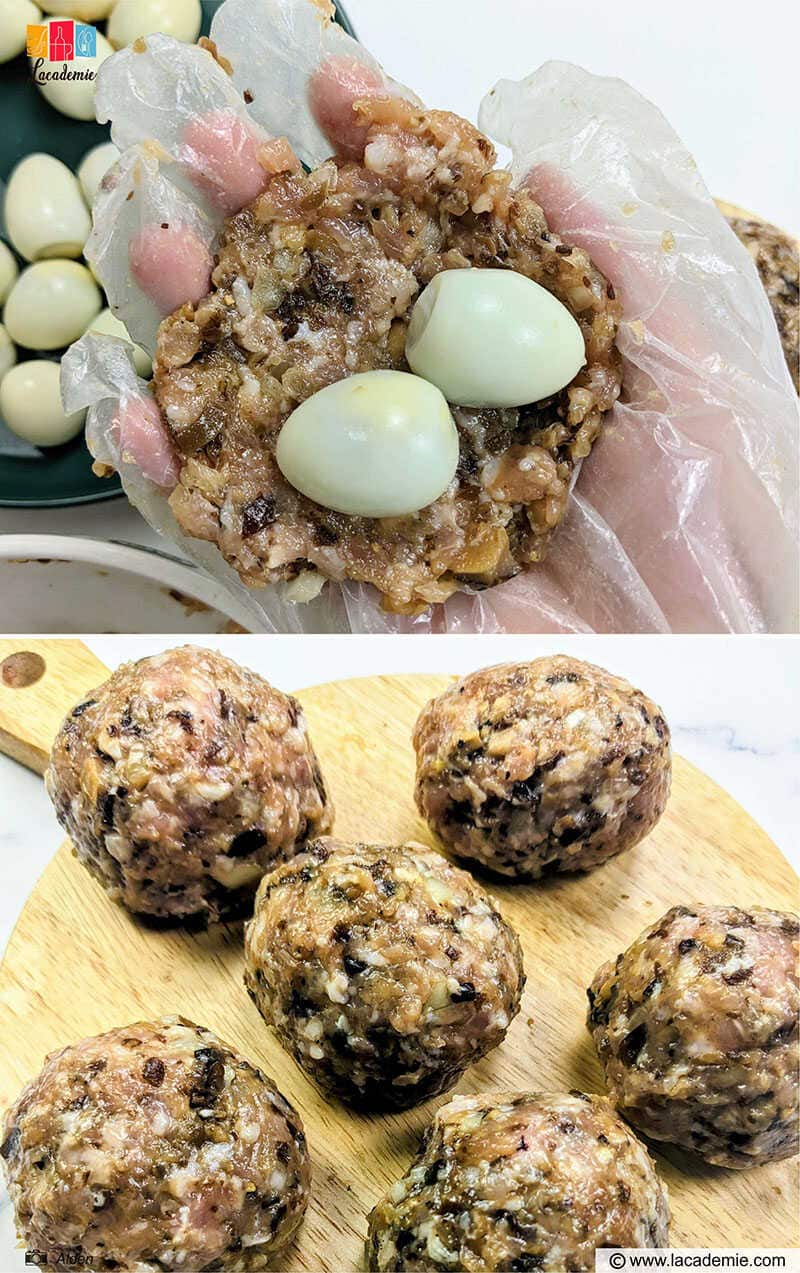
Step 4: Shape The Buns
Once the dough has proofed, gently press it down to release the air. Add the second part of the dough ingredients and mix well. Knead the dough for another 10 minutes.
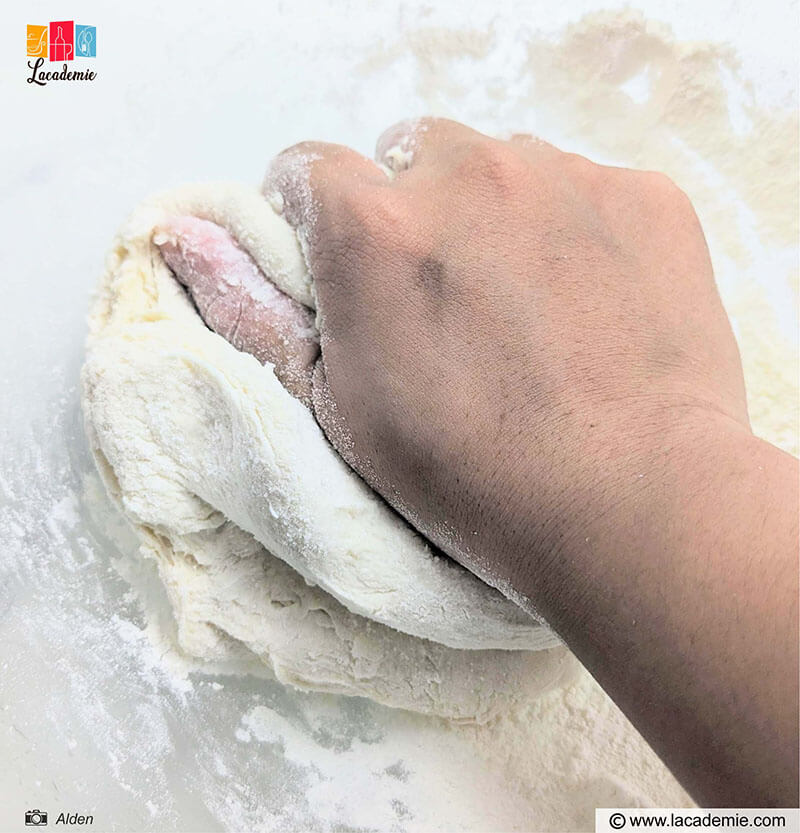
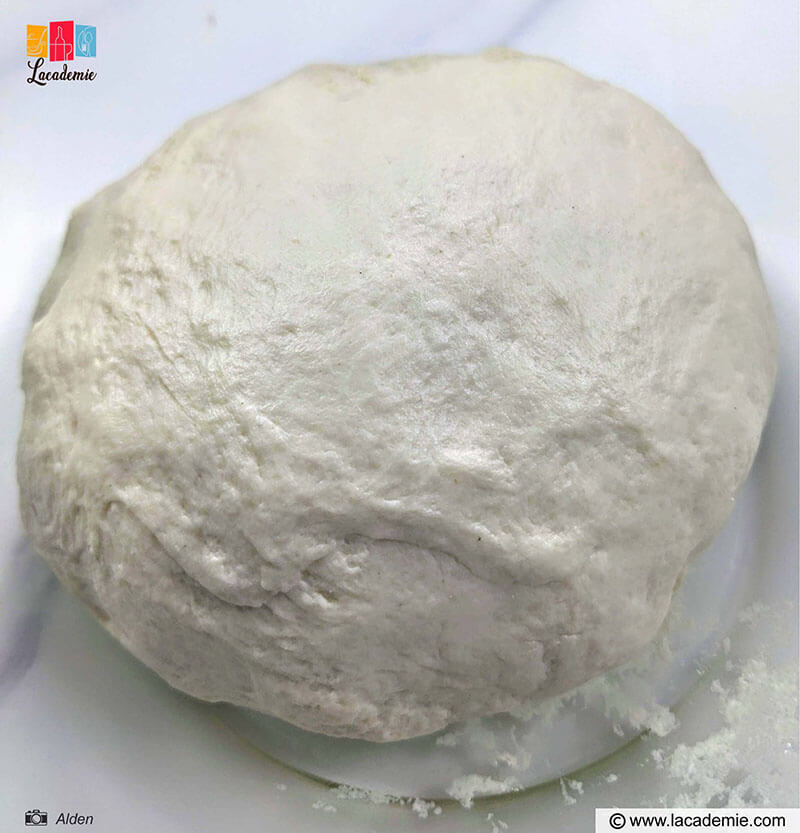
Divide the dough into equal portions.
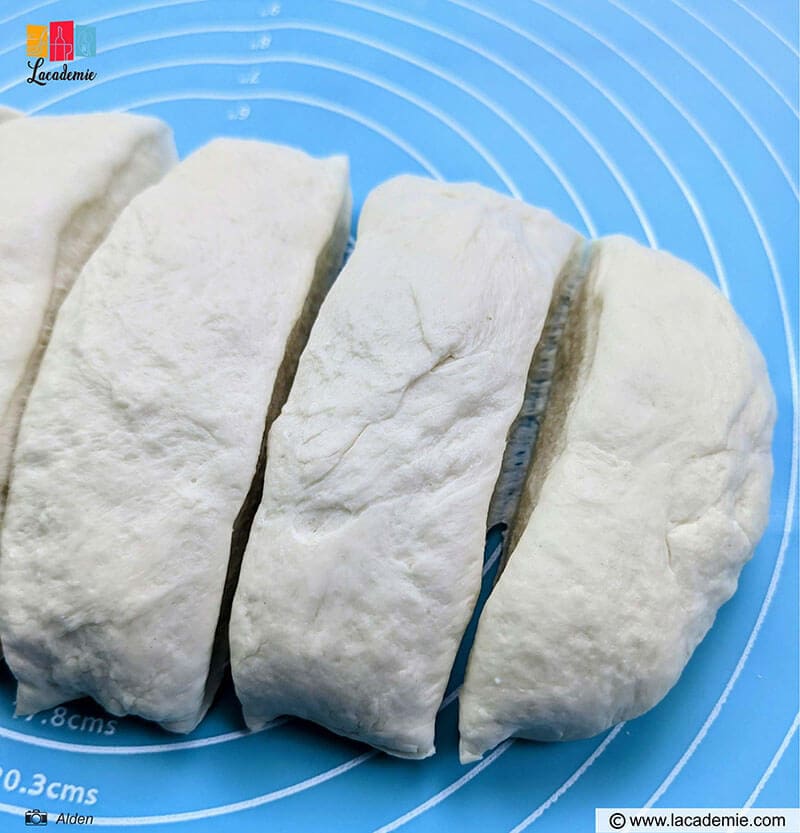
Flatten each portion into a circle, with the edges thinner than the center.
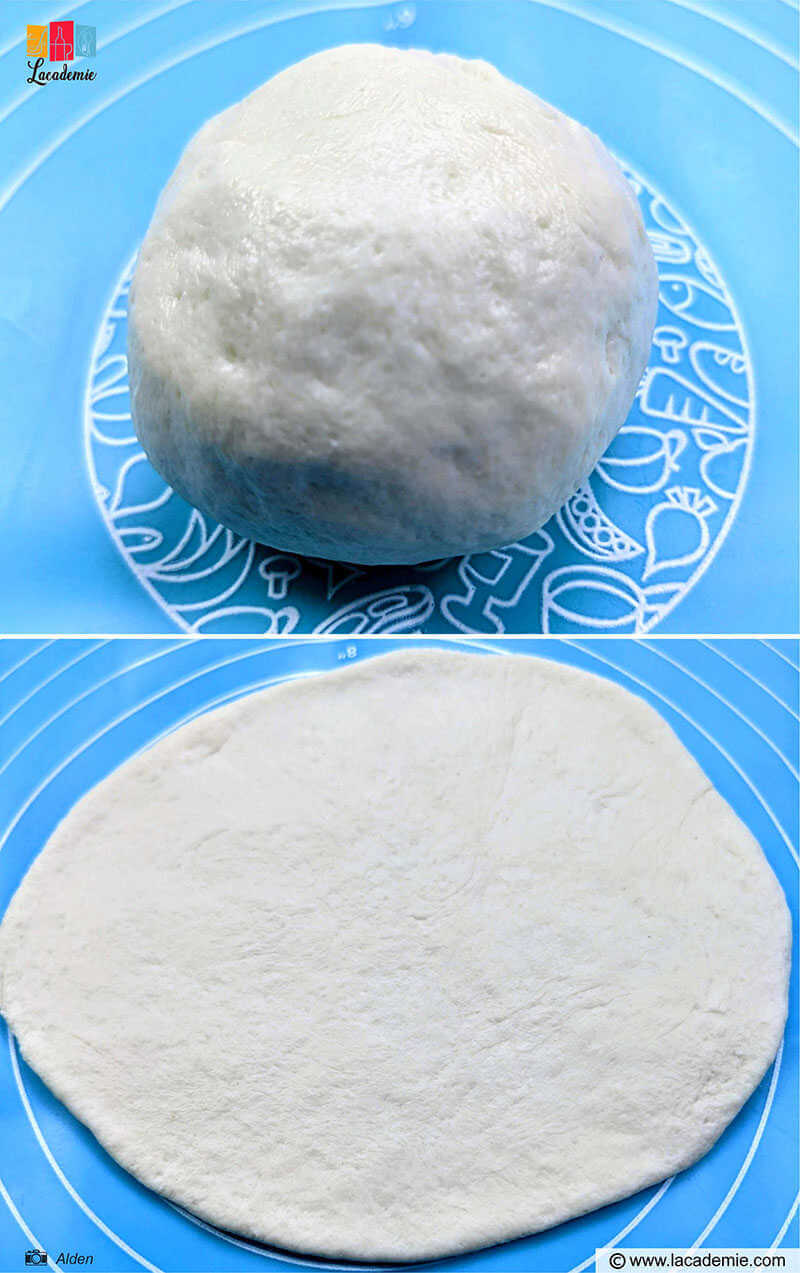
Step 5: Wrap The Buns
With a Banh Bao mold: Once the dough has been rolled out, place the meat filling wrapped in egg in the center and fold the dough to form a round shape. Then, gently press the dough into the Banh Bao mold. Next, flip the mold over and gently tap it on the table to release a neatly formed bun.
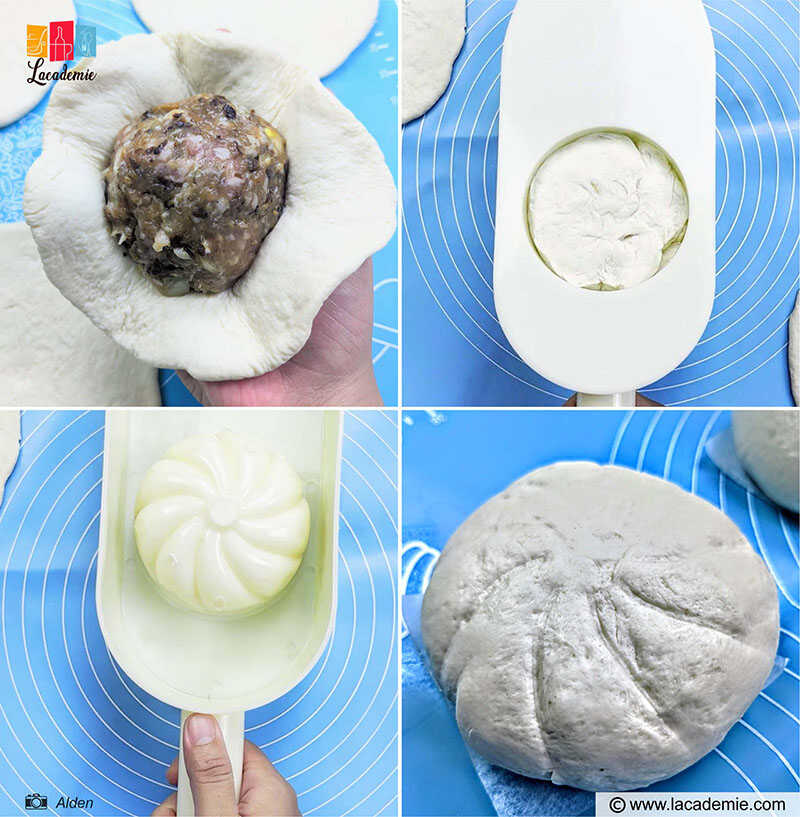
Without a mold: Place the filling in the center of the flattened dough and fold the edges over the filling, sealing the bun by pinching the edges together.
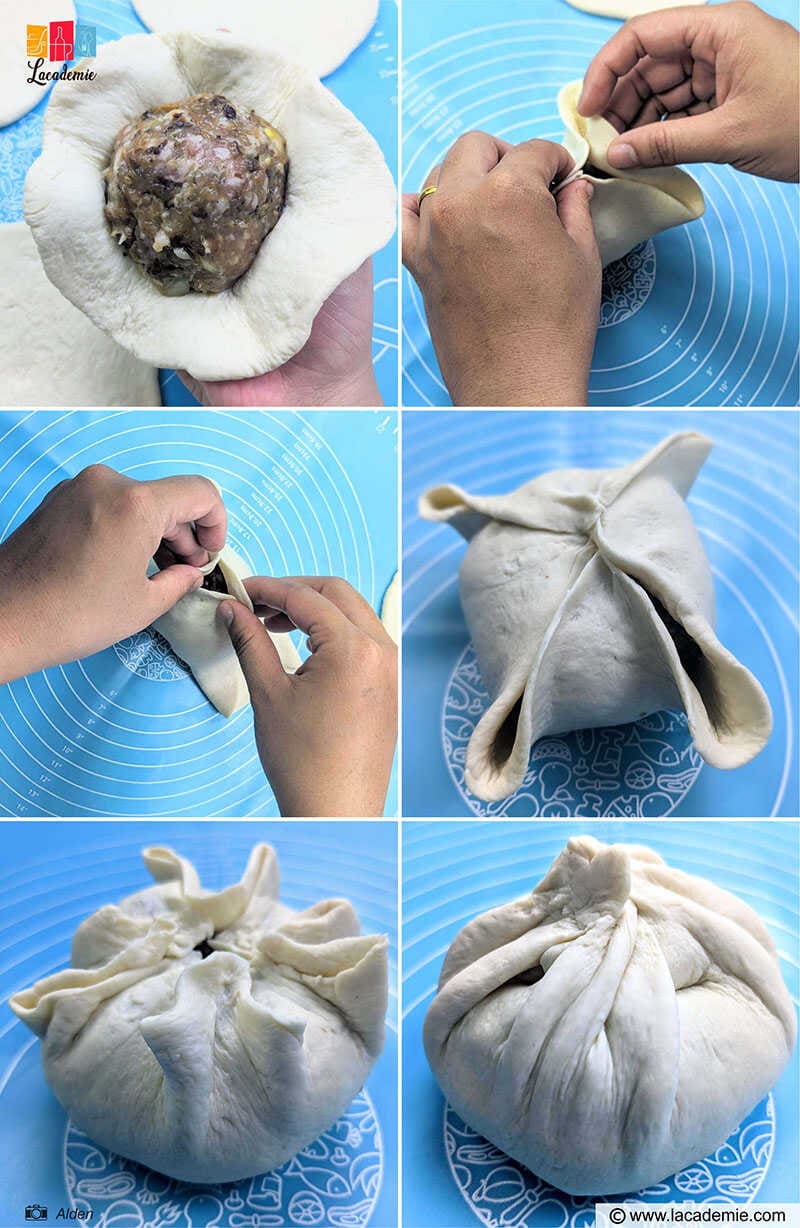
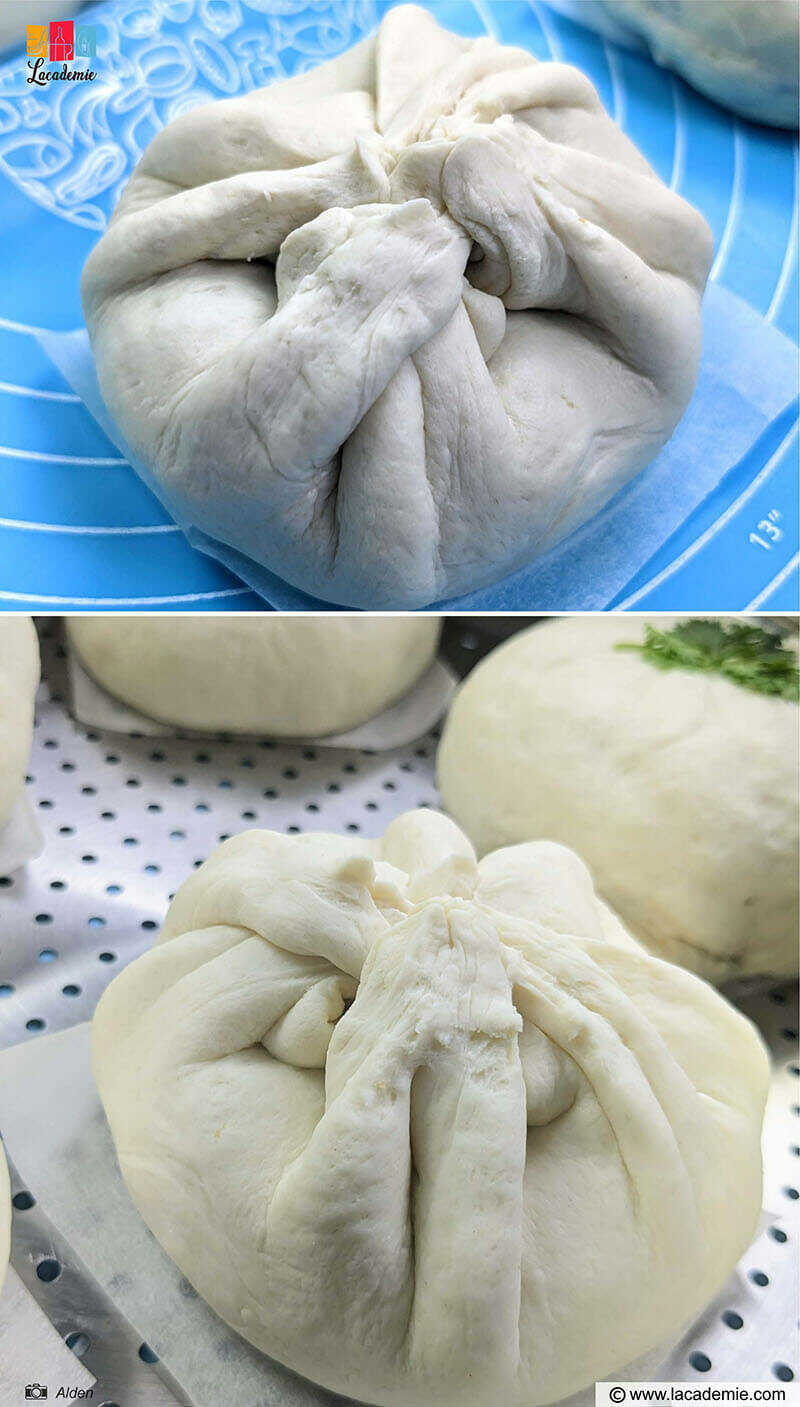
Step 6: Steam The Buns
Place all the shaped buns in a steamer and rest them for 10 minutes before steaming.
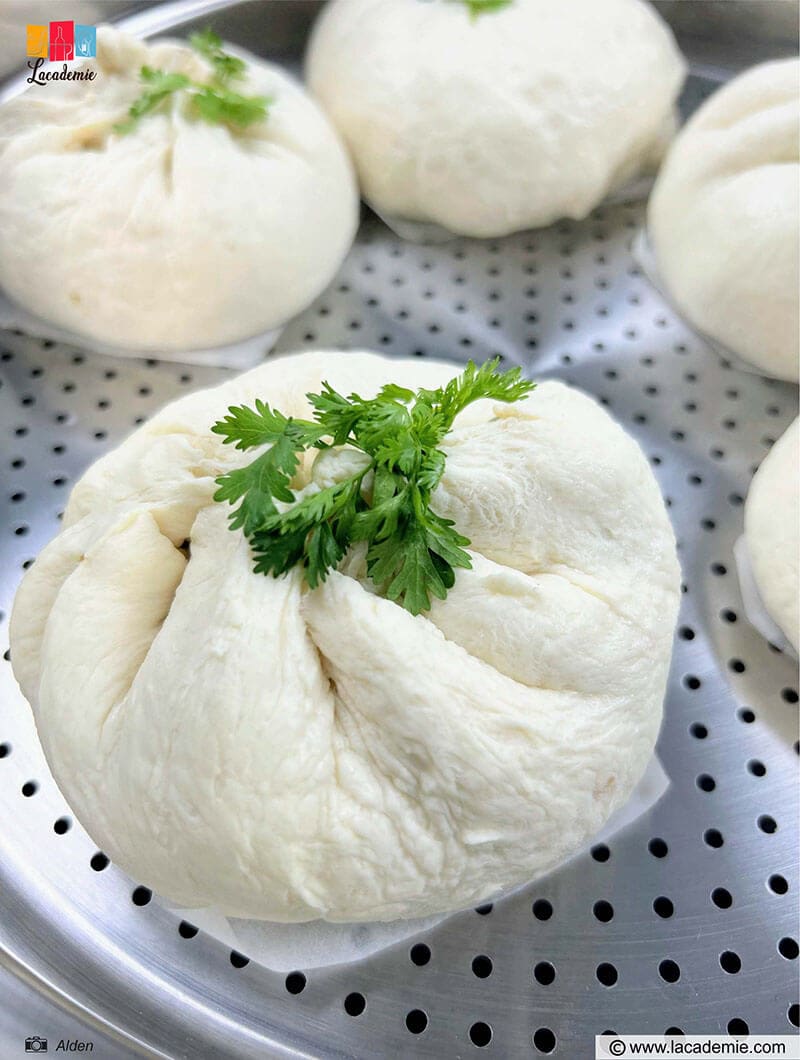
Meanwhile, boil a pot of water. After resting, steam the buns over boiling water for about 20 minutes until fully cooked.
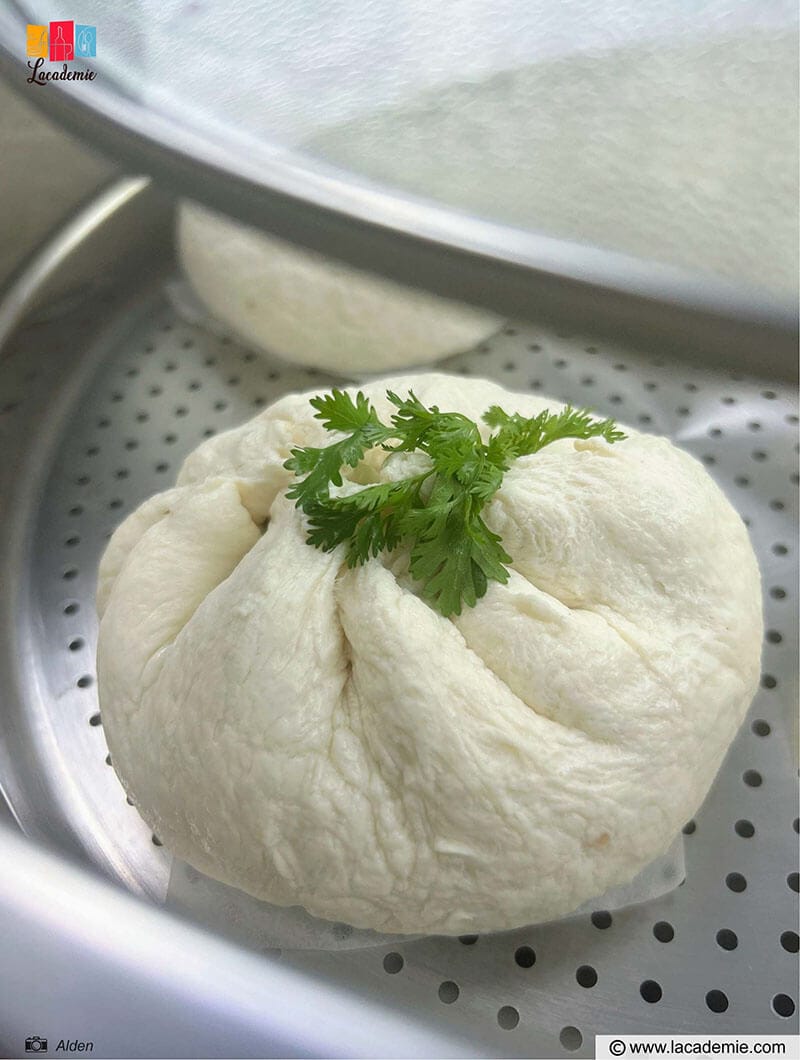
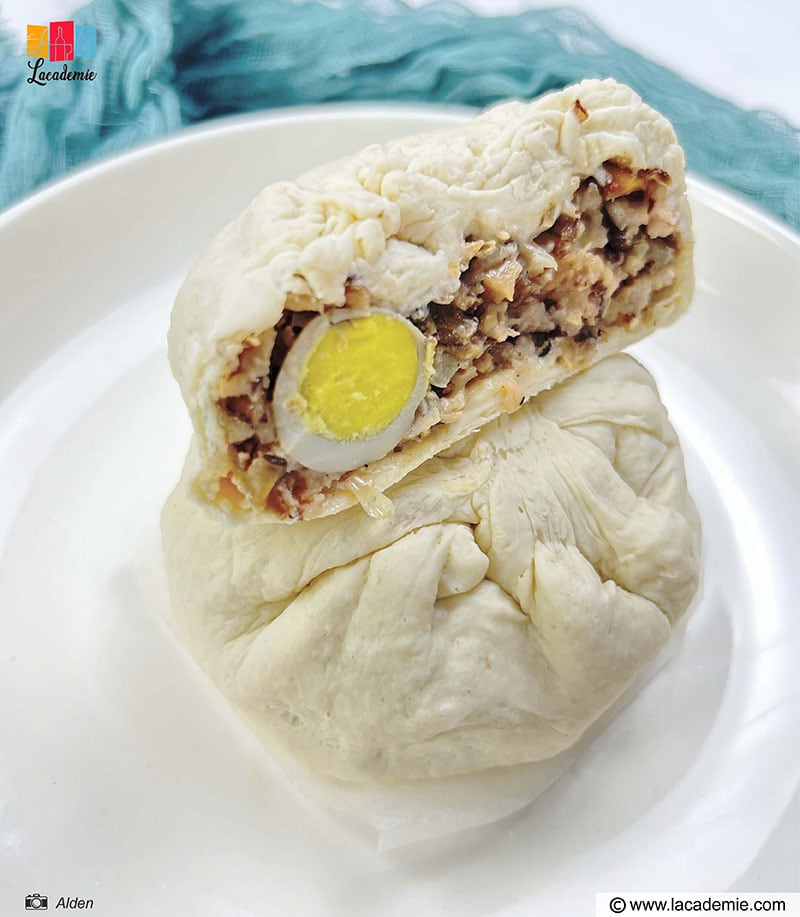
Handy Tips You Should Remember
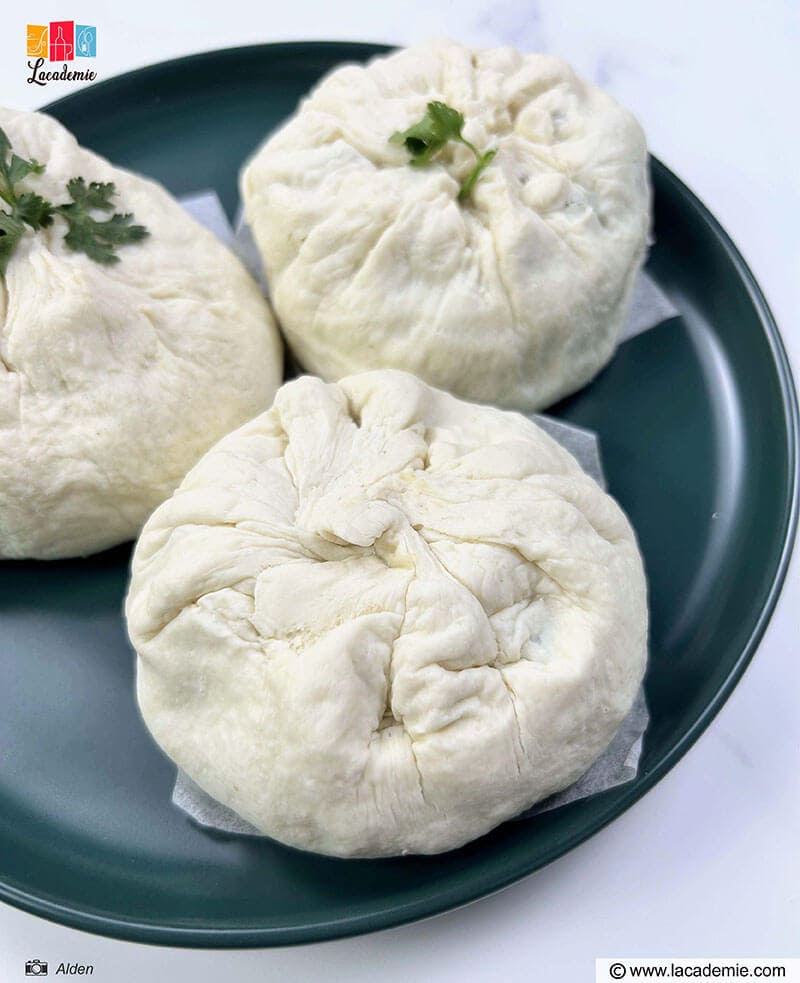
- Avoid over-proofing the dough, as it will cause the buns to wrinkle when steamed.
- If the dough doesn’t rise, it could be due to a lack of yeast, using too little yeast compared to the amount of flour, or not kneading the dough sufficiently.
- Don’t steam the buns for too long, as it will turn them yellow. Add a little vinegar to the steaming water to prevent this.
- Before steaming, brush the steamer with some oil if you don’t have parchment paper to line the bottom.
- Proofing time depends on various factors, such as ambient temperature and the internal temperature of the dough. An hour is usually sufficient in warmer climates, but it may take longer in colder weather.
- When steaming the buns, ensure the buns are high enough above the pot so that boiling water doesn’t touch and ruin them.
- Using bleached flour or low-gluten wheat flour can result in softer and more delicious buns.
How To Store Your Banh Bao
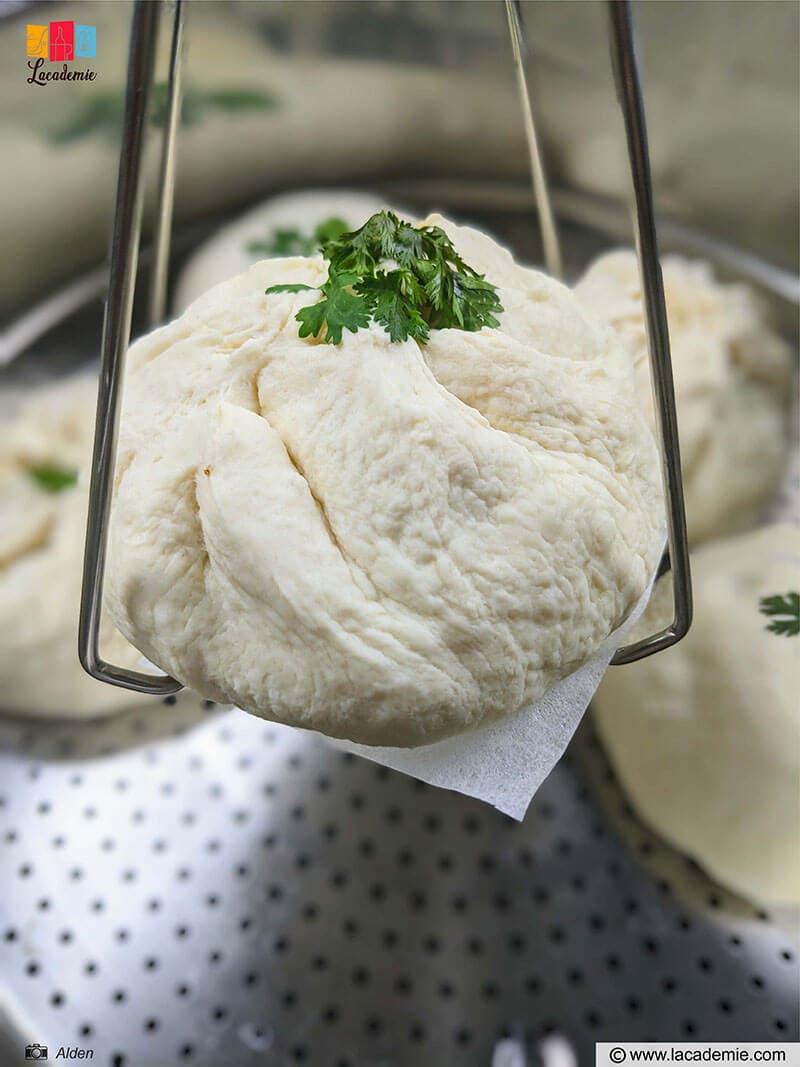
Storing Vietnamese Banh Bao properly is crucial for maintaining its taste and texture. By following appropriate storage methods, you can enjoy these buns whenever you desire.
For uncooked Banh Bao, wrap each bun tightly in plastic wrap. Next, place them in the refrigerator, preferably in the cooler section. This will help to keep the buns fresh for up to a week.
When it comes to cooked Banh Bao, also wrap them securely with plastic wrap before storing them. Refrigeration will preserve the buns for up to a week, while freezing can extend their shelf life to two weeks. To enjoy the buns later, simply defrost and re-steam them.
Variations Of Banh Bao You Will Love
- Tasty ways to enhance the filling: Add ingredients like Chinese sausage, salted egg, or char siu for a savory filling. Or choose vegetarian or sweet fillings like mushroom, red bean, or mung bean.
- Deep-Fried Banh Bao: A crispy alternative to the traditional steamed version, these buns are deep-fried until golden brown, offering a unique texture and flavor.
- Baked Banh Bao: For a healthier option, baked Banh Bao provides a similar taste to the steamed version but with a slightly different texture due to the baking process.
- Plain Banh Bao: This variation features steamed or fried Banh Bao buns with no filling. They are usually served alongside crispy roasted pork, allowing the rich flavors of the pork to shine through.
- Plain Banh Bao dipped in sweetened condensed milk: A sweeter take on the classic Banh Bao, perfect for those with a sweet tooth. Simply dip the fried buns in sweetened condensed milk for a delightful dessert or snack.
Like This Recipe? Try Other Vietnamese Snacks
Vietnam offers plenty of tasty snacks that you should try if you find Banh Bao enjoyable. Here are some options I believe you will love!
- Vietnamese Peanut Sticky Rice (Xoi Dau Phong): A traditional snack or breakfast item, Xoi Dau Phong features glutinous sticky rice cooked with peanuts, offering a deliciously nutty flavor and a chewy texture.
- Vietnamese Fruit Cocktail with Coconut Milk (Che Thai): A delightful dessert or snack, Che Thai is a colorful mix of fruits and jellies, all soaked in a rich and creamy coconut milk base, making for a refreshing and indulgent treat.
- Savory Vietnamese Crepes (Banh Xeo): These thin, crispy rice flour crepes are filled with an assortment of ingredients, such as pork, shrimp, and bean sprouts. Banh Xeo is typically served with fresh herbs and traditional Vietnamese Nuoc Cham.
- Vietnamese Fresh Spring Rolls (Goi Cuon): A healthy and refreshing snack, Goi Cuon consists of rice paper rolls filled with a combination of fresh vegetables, herbs, and often shrimp or pork, served with a flavorful dipping sauce.
FAQs
Sharing The Love For Banh Bao
With the right tools, ingredients, and techniques, you’ll soon be able to enjoy these soft, fluffy buns filled with a flavorful, savory mixture. Don’t hesitate to experiment with different fillings or ingredients to create your dream version of Bah Bao.
We would love to hear about your Banh Bao-making experience! Please share your thoughts, tips, or variations in the comments section below. If you found this recipe tasty, remember to give it a high rating and share it with others who may be interested in Vietnamese cuisine!
Nutrition Facts
6 servings per container
- Amount Per ServingCalories440
- % Daily Value *
- Total Fat
12.5g
19%
- Saturated Fat 2.9g 10%
- Cholesterol 203mg 68%
- Sodium 1263mg 53%
- Potassium 492mg 15%
- Total Carbohydrate
52.5g
18%
- Dietary Fiber 2g 8%
- Sugars 5.5g
- Protein 26.5g 52%
- Calcium 82%
- Iron 5%
- Vitamin D 8%
* The % Daily Value tells you how much a nutrient in a serving of food contributes to a daily diet. 2,000 calories a day is used for general nutrition advice.

